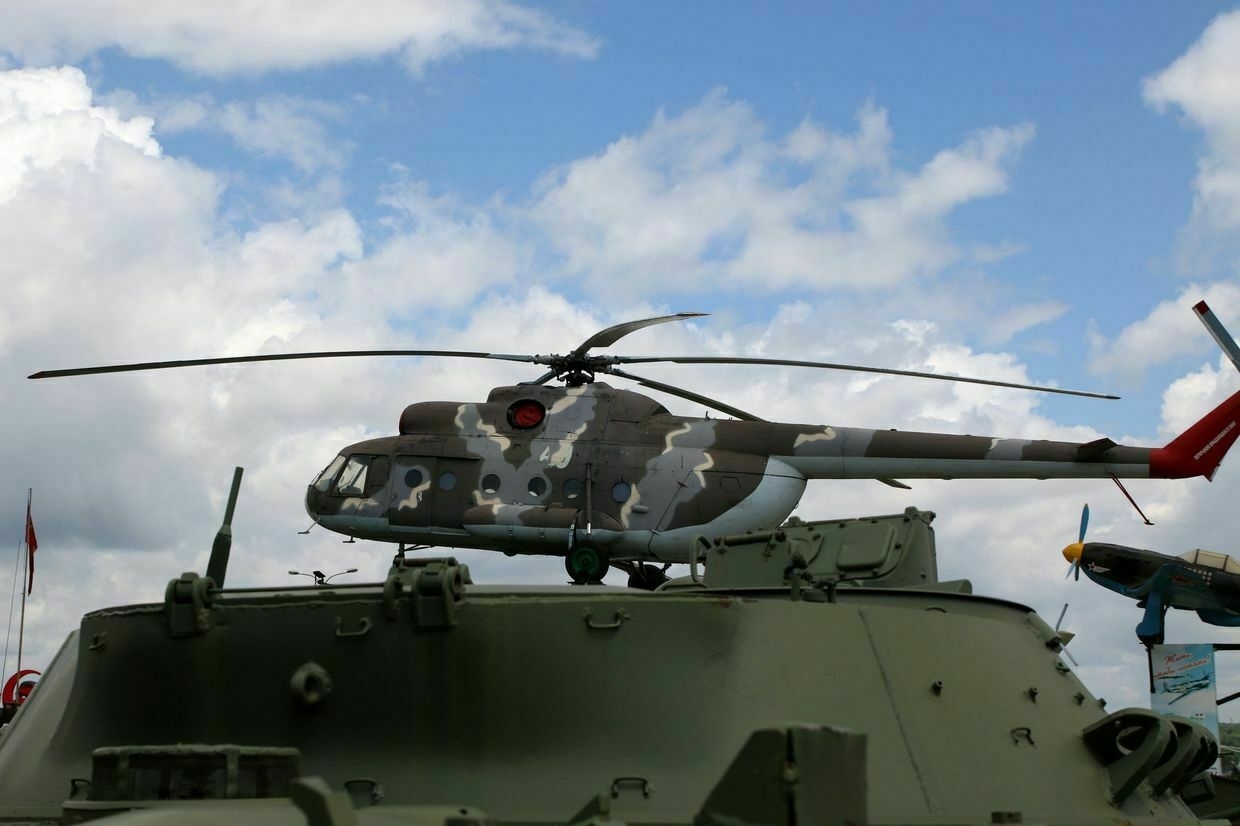-
Russia-Iran alliance wavers as Tehran suffers major blows
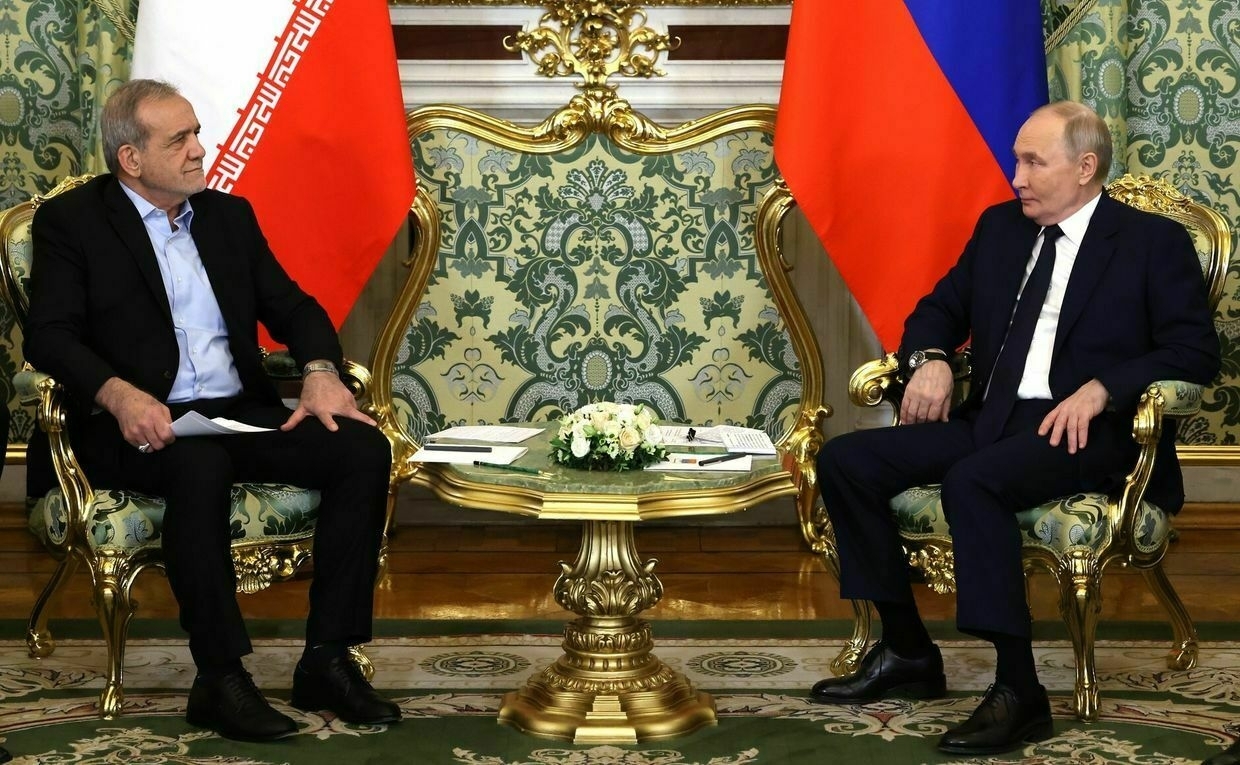
Tehran, Russia’s main ally in the Middle East, has been dealt a heavy blow as Israel dismantled its network of proxies and then struck targets in Iran.
The recent Iranian-Israeli war, which ended with a ceasefire on June 24, showed that the regional balance of power has shifted in Israel’s favor.
This could have a major impact on Russian-Iranian relations as Moscow will have to recalibrate its approach to the region.
Russian-Iranian cooperation is likely to continue but Iran’s ability to help Moscow is being diminished.
On the other hand, Russia, which is still heavily engaged in Ukraine, has few resources to spare for helping Iran.
“In public, Russian-Iranian relations will continue as business as usual,” Neil Quilliam, a Middle East expert at Chatham House, told the Kyiv Independent.
“Behind closed doors, however, Iran’s confidence in Russia has been undermined, and this no doubt will weaken the relationship.Tehran has learned to its cost that Russia is no longer a dependable ally.”
Russian-Iranian cooperationRussia has been Iran’s primary arms supplier, selling air defense systems, helicopters, and fighter jets to Tehran.
Since Russia launched its full-scale invasion of Ukraine in 2022, Iran has returned the favor by supplying Shahed combat drones to Moscow. Russia later licensed the technology and began producing the drones domestically.
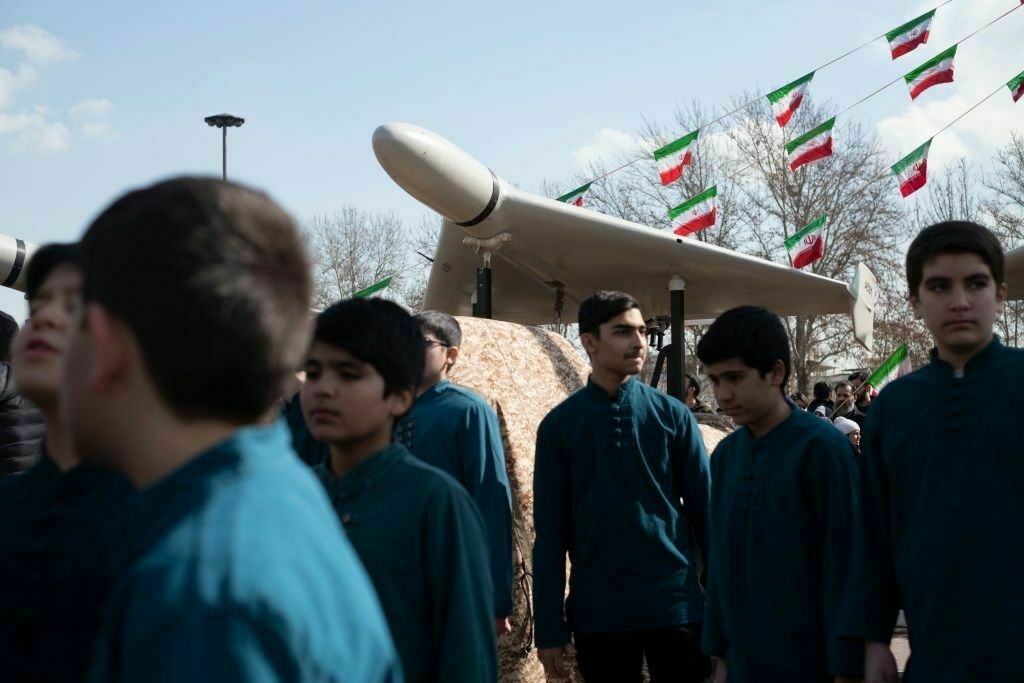
Iranian youth stand under an Iranian-made Shahed-136 unmanned aerial vehicle in Tehran, Iran, on Feb. 11, 2023. (Morteza Nikoubazl / NurPhoto / Getty Images) Shaheds have been the main combat drones used by Russia to attack Ukrainian cities.
In 2024, the U.S. also confirmed that Iran had started supplying ballistic missiles to Russia, although there is no evidence so far of their use against Ukraine.
The Iranian regime, which is subject to international sanctions due to its nuclear weapons program, has also been able to survive due to economic cooperation with Russia and other non-Western countries such as China, Iraq, the United Arab Emirates, and Turkey.
In 2024, Russian-Iranian trade rose 16% year-on-year to $4.8 billion, making Russia Iran’s fifth-largest trading partner.
Strategic partnership dealIn January, Russia and Iran also concluded a 20-year strategic partnership agreement.
The deal envisages cooperation in the anti-terrorism, energy, financial, and cultural spheres. It also has clauses on technology, cybersecurity, and efforts to fight money laundering and organized crime.
According to the agreement, if one of the sides is attacked, the other side cannot provide military or any other help to the aggressor.
“Russia neither has the capacity to help nor the will to do so, given its experience in Syria, where it suffered a strategic loss.”
“I would say the agreements (between Russia and Iran) are substantive — as with all strategic partnerships they have their limits; they stop short of a mutual defence pact, which is why Russia was not obligated to provide military assistance to Iran,” Emily Ferris, a Russia expert at the Royal United Services Institute, told the Kyiv Independent.
She argued that “it was an important signal of long-term intent to deepen the relationship, particularly around trade” and “suggested that neither side saw Western sanctions being eased imminently.”
Can Russia help Iran?As Russia is focused on its war against Ukraine, its ability to help Iran is very limited. The Kremlin condemned the Israeli and U.S. strikes on Iran but did not provide any material help.
"Russia is already overcommitted in Ukraine and does not have the military resources to spare to become embroiled in another conflict," Ferris said. "It did not give Iran air defense systems that could have moved the dial on the war in Iran's favor. Russia's offer of mediation was swiftly shot down by the Americans."
Quilliam also argued that "there is no evidence to suggest that Russia helped Iran in any material way during the war with Israel."
"Russia neither has the capacity to help nor the will to do so, given its experience in Syria, where it suffered a strategic loss," he added in a reference to the fall of dictator Bashar al Assad's regime in December 2024. "Should the war resume, it is unlikely that Russia will provide material aid to Iran, at least in the short term."
There are some ways in which Moscow is still able to help Iran, however.
"Iran will need diplomatic backing in the (UN) Security Council going forward, which Russia could provide," Aron Lund, a Middle East analyst at Century International, told the Kyiv Independent. "It will need help rebuilding its air defenses and its missile program. Whether Russia can afford to sell or share that kind of equipment is an open question."
He added that "military-industrial collaboration" between Iran and Russia is likely to continue.
Could Russia help Iran with nukes?One of the areas where Russia and Iran have cooperated is the nuclear sector.
Israel's main military objective in Iran was the destruction of nuclear facilities.
The Israeli government justified the attacks by saying that Iran was on the verge of creating a nuclear bomb. The Israeli government has sought to prevent Tehran from obtaining nuclear weapons as Iranian leaders have repeatedly called for eliminating Israel.
The International Atomic Energy Agency (IAEA) said on June 12 that Iran was in breach of its nuclear non-proliferation obligations, although IAEA Director General Rafael Grossi said in a June interview he had no proof that Tehran was currently developing a nuclear weapon.
Robert Kelley, an engineer with over 35 years of experience in the U.S. Department of Energy’s nuclear weapons complex, said that Iran has the technological capacity to build a nuclear bomb and the only reason it has not done so is political.
“Did I hear former President Medvedev, from Russia, casually throwing around the ‘N word’ (nuclear!), and saying that he and other countries would supply nuclear warheads to Iran?"
"If Iran started, they could (build a nuclear bomb) in less than 18 months, probably much less," he told the Kyiv Independent. "Depends on how much they saved from the nuclear weapons program that ended in 2003 and how good their progress was. The U.S. built two different nuclear weapons designs in 18 months in the 1940s and there is a lot more to go on now."
There are different assessments of the damage caused by Israeli and U.S. strikes to Iranian nuclear facilities during the war.
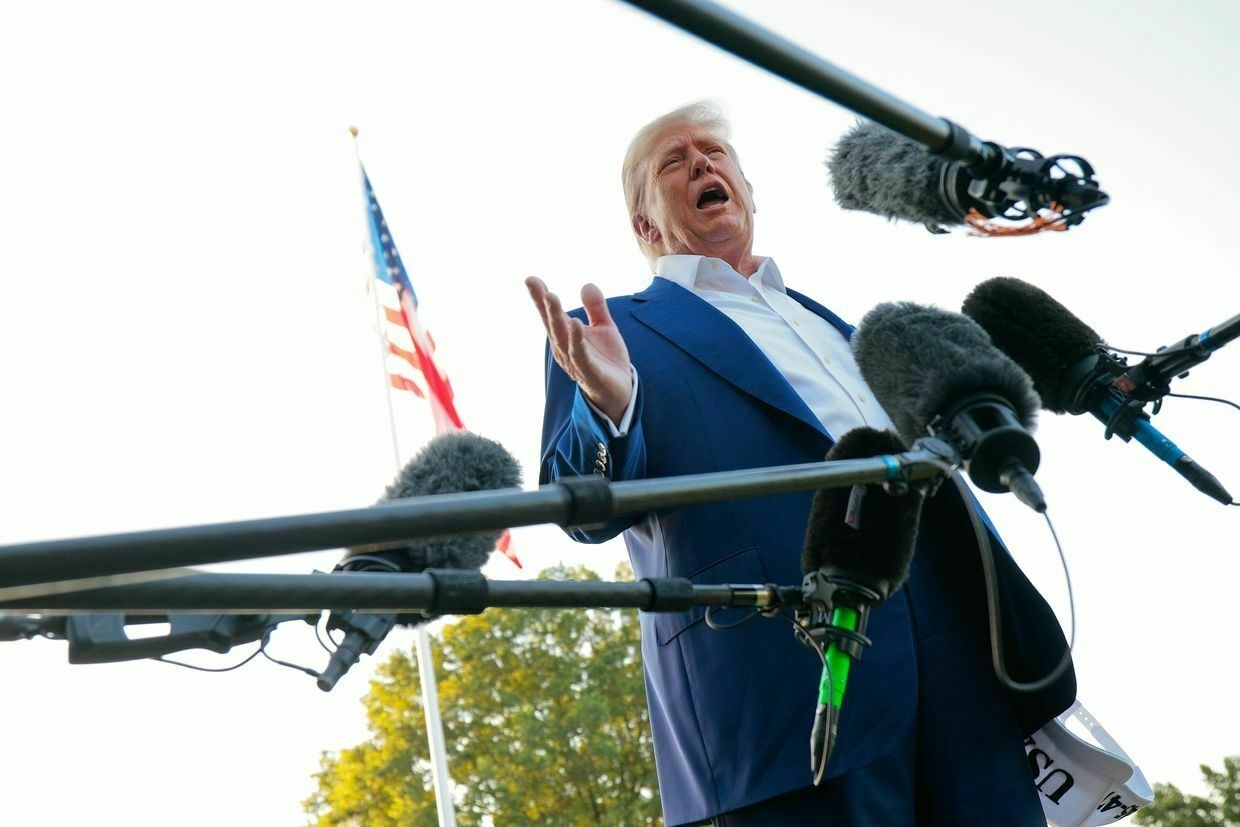
U.S. President Donald Trump speaks to reporters at the White House in Washington, DC, U.S. on June 24, 2025. (Chip Somodevilla / Getty Images) Israel argued that it had caused significant damage to Iran's nuclear weapons program, while U.S. President Donald Trump claimed it had been "obliterated."
But CNN reported on June 24 that the U.S. strikes on three Iranian nuclear facilities had not eliminated the core components of Tehran’s nuclear program and had likely delayed it by only a few months. The news outlet cited a leaked assessment by the U.S. Defense Intelligence Agency (DIA).
Former Russian President Dmitry Medvedev, deputy chairman of the country's security council, said on June 22 that "a number of countries are ready to directly supply Iran with their own nuclear warheads" — a statement that some interpreted as a hint that Russia could help Iran to develop its nuclear weapons program.
On June 23, Trump lashed out at Medvedev.
“Did I hear former President Medvedev, from Russia, casually throwing around the ‘N word’ (nuclear!), and saying that he and other countries would supply nuclear warheads to Iran?" Trump wrote on Truth Social. "The 'N word' should not be treated so casually."
Medvedev responded the same day, arguing that Russia did not intend to supply Iran with nuclear weapons.
Nuclear non-proliferationRussia has been Iran's main partner in the civilian nuclear sector. It has built Iran's Bushehr nuclear power plant and supplied the facility with enriched uranium.
At the same time, Russia has presented itself as a supporter of nuclear non-proliferation and opposed Iran's nuclear weapons program.
In 2015, Russia — along with the U.S., China, France, the U.K. and Germany — signed a deal to limit the Iranian nuclear program in return for sanctions relief.
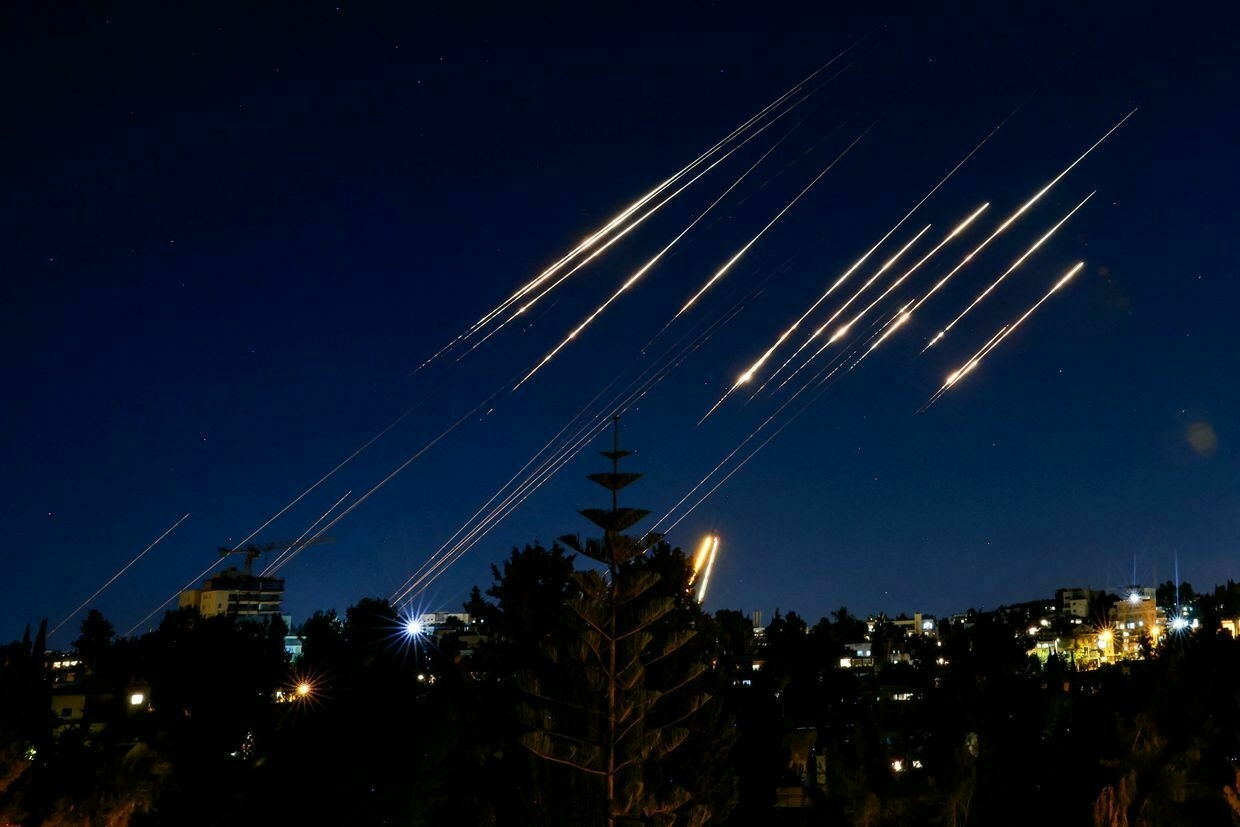
Missiles fired from Iran are pictured in the night sky over Jerusalem, Israel, on June 14, 2025. (Menahem Kahana / AFP via Getty Images) 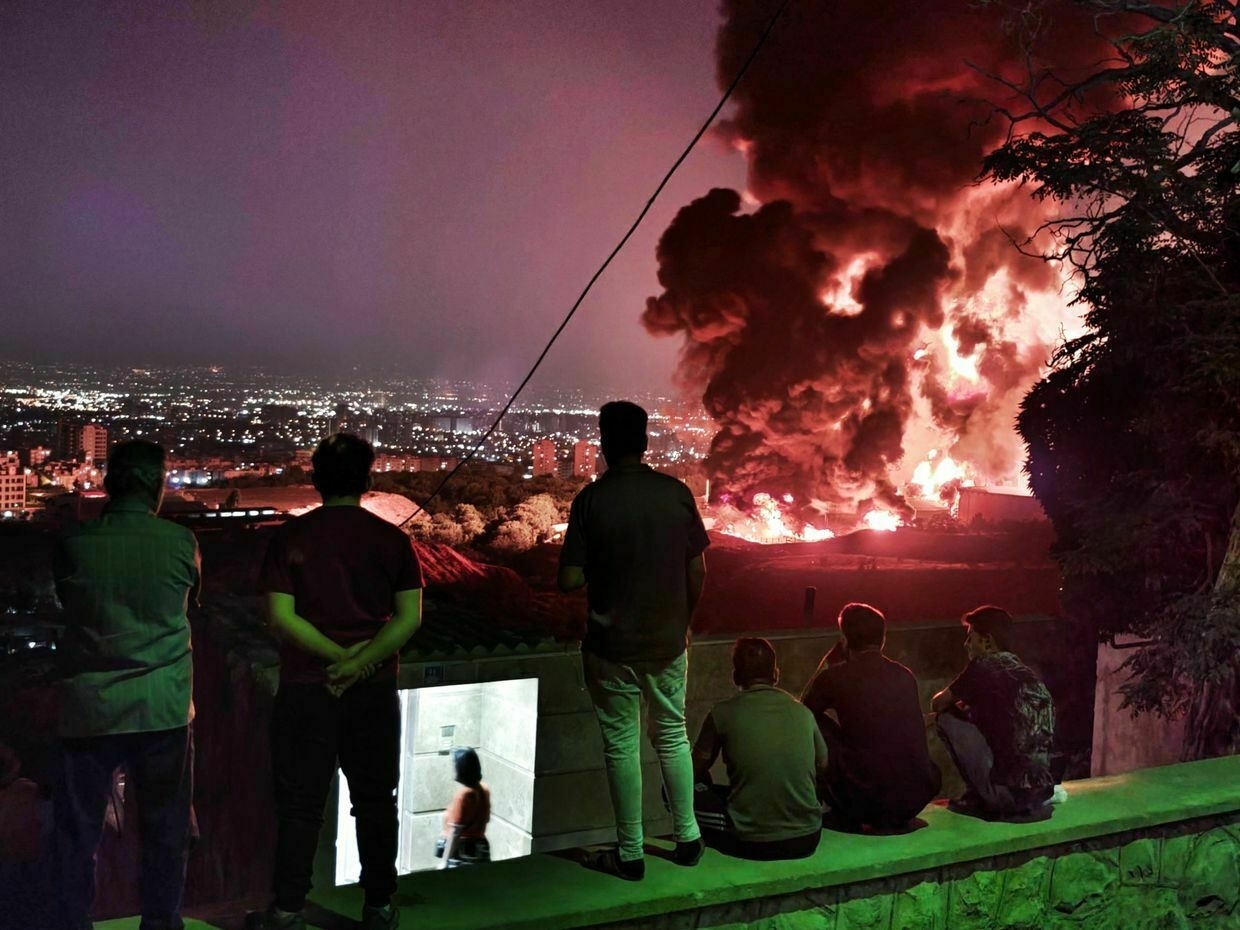
People observe fire and smoke from an Israeli attack on the Shahran oil depot in Tehran, Iran, on June 15, 2025. (Stringer/Getty Images) "So far, Russia has supported non-proliferation efforts in Iran," Marion Messmer, an arms control expert at Chatham House, told the Kyiv Indendent. "It doesn’t seem likely that a nuclear-armed Iran is in Russia’s interest — it would be disruptive in the Middle East, and it would give Iran more power when it’s likely that Russia prefers Iran to be the weaker party in the relationship."
Quilliam said that Russia "is unlikely to disrupt efforts to end Iran's nuclear program."
He added, however, that Moscow "may seek either to frustrate those efforts or come up with a creative diplomatic solution that serves its own interests, as it did with Syria’s chemical weapons issue."
Russia's regional influenceThe relationship between Moscow and Tehran is also changing because the influence of both Russia and Iran in the Middle East has decreased since 2023 as Israel dealt heavy blows to Iranian proxies.
One of them, the Gaza-based Islamist group Hamas, invaded Israeli territory, massacred 1,195 people, and took 251 people hostage in October 2023. Hezbollah, Iran's Lebanese proxy, also joined the war.
Since then, Israel has killed Hamas and Hezbollah leaders, destroyed much of their military infrastructure and invaded Gaza and southern Lebanon.
Russia's clout further diminished when the regime of Syrian dictator Bashar al-Assad, who was backed by Moscow and Tehran, collapsed in December 2024. Israel used the ensuing chaos to destroy the regime's military facilities and invaded southwestern Syria.
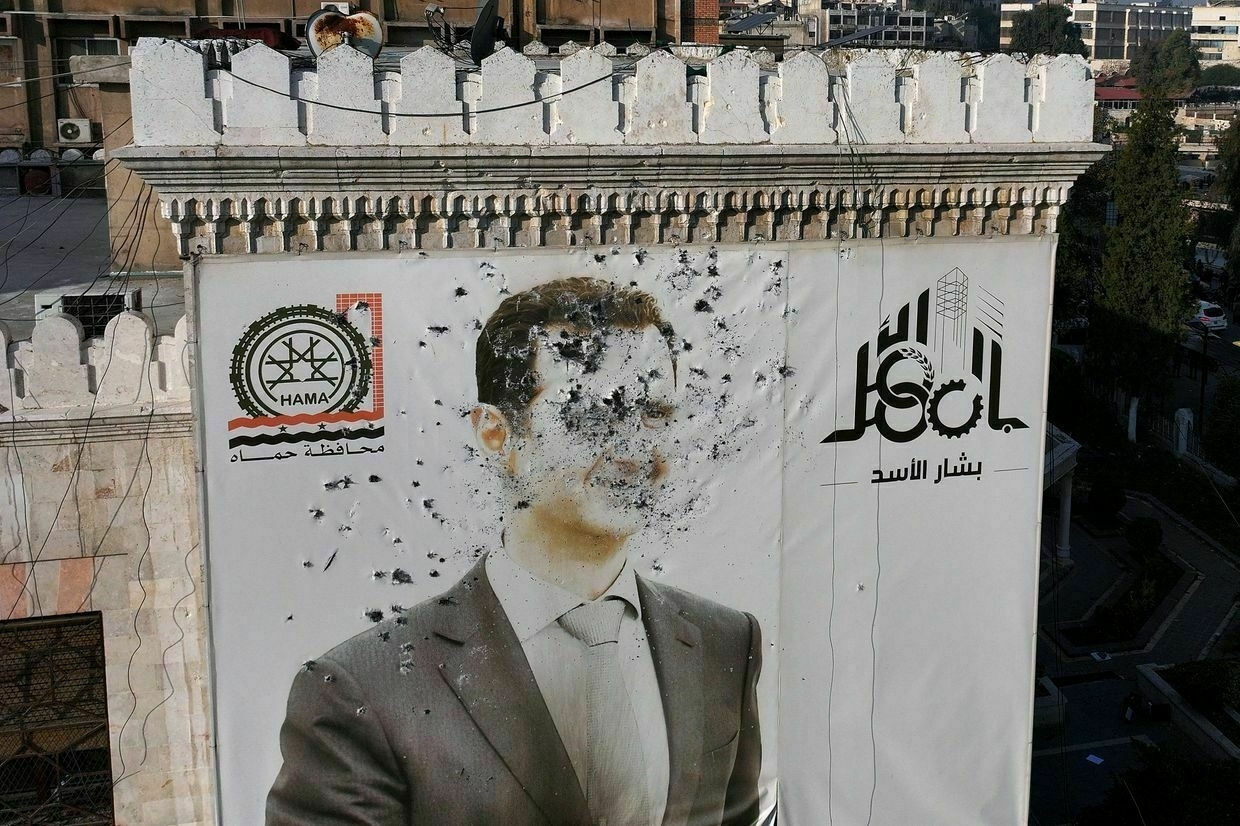
A bullet-riddled portrait of Syrian President Bashar al-Assad adorns Hama’s municipality building after it was defaced following the capture of the city by anti-government fighters in Hama, Syria, on Dec. 6, 2024. (Omar Haj Kadour / AFP via Getty Images) Furthermore, Israel's attacks on Iran in 2024 and 2025, which destroyed much of the country's air defense and damaged nuclear enrichment facilities, weakened the Iranian regime itself.
"Russia has seen its influence and ability to project power into the Middle East diminish since Oct. 7, 2023 and the collapse of the Assad regime," Quilliam said. "Regional players have come to view the U.S. as a dependable ally, but they have now come to view Russia as a liability."
Lund also argued that "Russia will need to take changed realities into account" amid the weakening of Iran and its allies.
"It’s possible that Russia will want to re-balance its Middle Eastern position over the longer term, if Iran starts looking like a resource drain that can’t offer much in return," he added. "The Iran ties have been positive for Russia, but they also come at a cost – especially in relation to Israel, but also among the Gulf Arab states."
Spoiled relations with US and IsraelApart from the regional balance of power, the Israeli-Iranian war may also have an impact on Moscow’s relationship with Washington.
The U.S. joined the war against Iran on June 22, attacking three Iranian nuclear sites with bunker buster bombs and Tomahawk cruise missiles.
Trump's support for Israel's war effort may potentially strain U.S.-Russian relations.
"Trump’s support for Israel and its participation in the Israel-Iran war is highly personalized," Quilliam said. "It has the potential to spoil relations between the U.S. and Russia but so much depends on Trump's temperament and his willingness to accommodate Putin's concerns."
He argued that Putin "will feel betrayed by Trump and, therefore, less willing to negotiate in good faith."
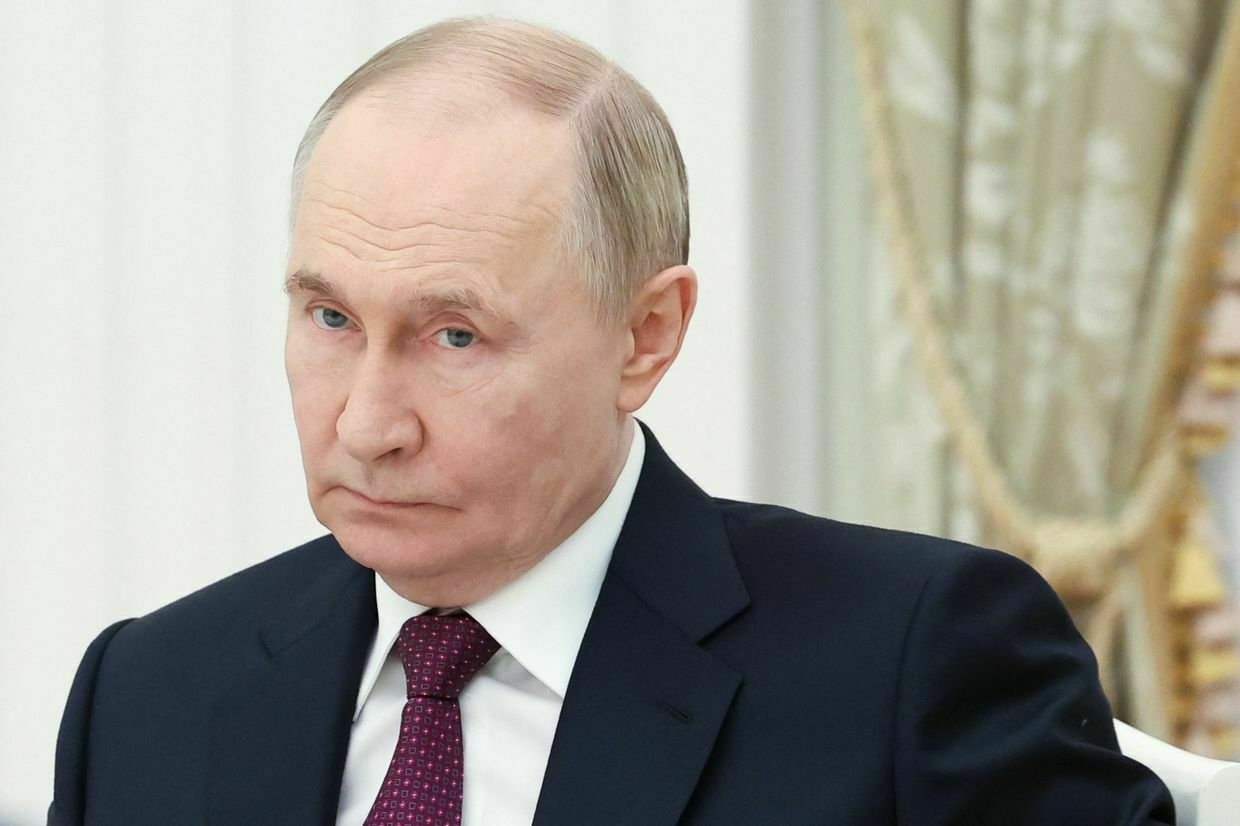
Russia’s President Vladimir Putin meets with Iran’s foreign minister at the Kremlin in Moscow, Russia, on June 23, 2025. (Alexander Kazakov / Pool / AFP via Getty Images) "As such, Trump-Putin relations will likely cool, and this may force the U.S. to recalibrate its position towards Russia vis-a-vis Ukraine," Neil continued.
But other analysts argue that the impact of the Israeli-Iranian war on U.S.-Russian relations should not be overestimated.
"Israel’s interest is ultimately to get Russia to distance itself from Iran, and that’s one reason the Israelis are reluctant to see their ties with Moscow deteriorate too much."
"I don’t think this war makes much difference to Russian-American relations, to be honest," Lund said. "They had plenty to disagree on already. It could go the other way, too, if the war is followed by a diplomatic process. Russia will try to position itself as a facilitator of any new nuclear agreement between Iran and the United States."
He also said that the U.S. "needs Russian acquiescence or support in order to get a new Iran (nuclear) deal endorsed by the Security Council."
"So there is in fact some level of shared interest here, despite the very severe Russian-U.S. disagreements on most other things relating to Iran," Lund added.
Russian-Israeli relations have also been undermined by Israel's wars with Iran and its proxies.
Analysts say, however, that the Iranian-Israeli war will not lead to a complete break between Russia and Israel.
Quilliam argued that Russian-Israeli relations "will remain unchanged, as the two countries are accustomed to deconflicting interests in theatres of war, as they did in Syria."
Lund said that Russian-Israeli relations were "bad already" before the Iranian-Israeli war.
"In so far as we are now about to enter a diplomatic phase, Russia could try to act as a go-between for the Israelis, since it has relations with both parties," he added.
"Israel’s interest is ultimately to get Russia to distance itself from Iran, and that’s one reason the Israelis are reluctant to see their ties with Moscow deteriorate too much. They need to be able to continue that bargaining."
Note from the author:
Hello! My name is Oleg Sukhov, the guy who wrote this piece for you.
I was born in Russia and moved to Ukraine in 2014 because I couldn't stand the suffocating atmosphere of that semi-totalitarian country. I used to think it might be possible to transform Russia into a liberal Western-oriented country. Now it's clear that it's a lost cause.
But at least I can atone for the crimes of my homeland by exposing its barbaric aggression against Ukraine and providing objective and independent coverage of what is going on there. I'm also trying to contribute to Ukraine's transformation into a full-fledged Western liberal democracy strong enough to defeat Russia.
Our publication needs help from every one of you — support Ukrainian wartime journalism, become a member of the Kyiv Independent.
-
Smashing previous monthly record, Russia launches 5,337 kamikaze drones against Ukraine during June
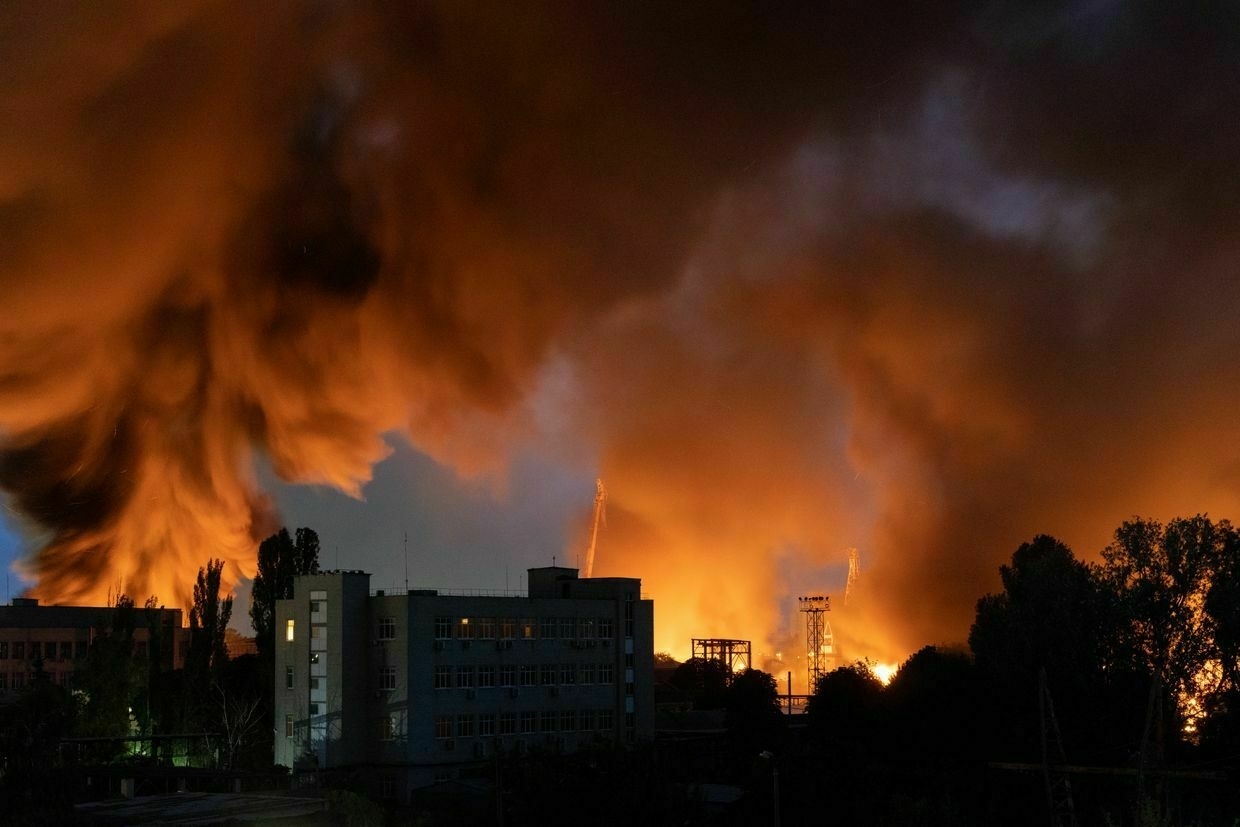
Russia launched a record 5,337 Shahed-type drones against Ukraine in June, according to data from the Ukrainian Air Force and Dragon Capital, smashing the previous record of 4,198 set in March.
Russia’s bombardments, a fact of life after three years of full-scale war, have intensified dramatically in May and June, with mass attacks becoming more frequent and more deadly.
Russia is now capable of launching in a single night as many drones as it did over an entire month in early summer 2024.
In June 2024 the number of drones launched was 332. On June 27 of this year alone Russia launched 363 drones, on June 17, 440, and on June 29, 477, in what was the largest aerial attack of the full-scale war.
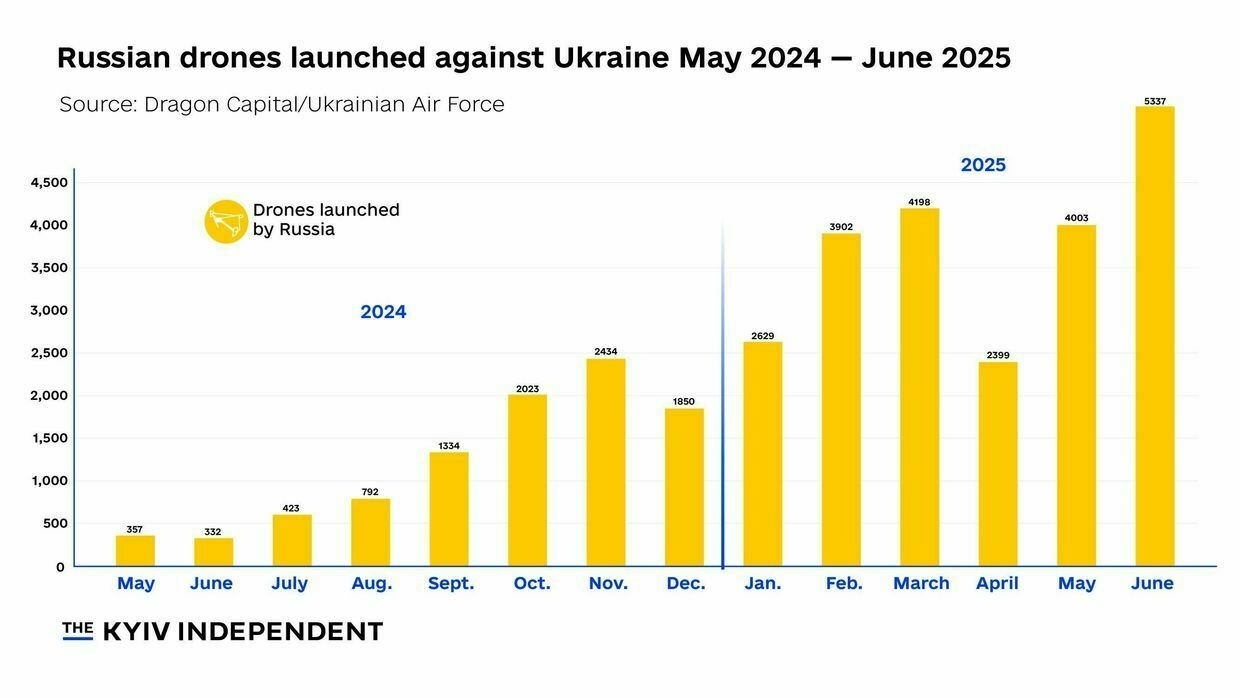
Russian drones launched against Ukraine by month (Nizar al-Rifai/The Kyiv Independent) President Volodymyr Zelensky said on June 24 that Russia has launched around 28,000 Shahed-type drones since 2022, with around 10% of them fired since the beginning of the month.
Almost all of Russia’s deep-strike drones are divided into three similar varieties — Iranian-made imported Shaheds, which have been in use since late 2022, Russian-made Gerans, which are direct copies of Shaheds, and more recently Garpiya-A1s, which look similar but use Chinese parts.
There are also inexpensive “dummy drones,” or Gerbers, which resemble Shaheds but do not carry explosives.
Gerbers distract Ukrainian radar and anti-aircraft fire and typically make up half of the drones sent into Ukraine in a given attack, a Ukrainian mobile defense group that shoots them down told the Kyiv Independent last month.
Often launched in coordination with cruise and ballistic missiles, Russian kamikaze drones have targeted Kyiv and other Ukrainian cities with renewed ferocity in recent weeks, killing dozens of civilians and injuring hundreds more.
“The windows were shattered, and smoke covered the place. We went outside and checked that everyone in the family was alive.”
On June 17, 2025 there was the deadliest attack on Kyiv since the start of the year when 30 people were killed in the capital, and 172 others injured during a nine-hour assault.
"My children were already in the bathroom. (My wife and I) were in the corridor. We heard the Shahed's descent, then the hit," Ivan Serebrianskyi, 42, an entrepreneur who lives in the damaged building told the Kyiv Independent on June 17, right after the attack.
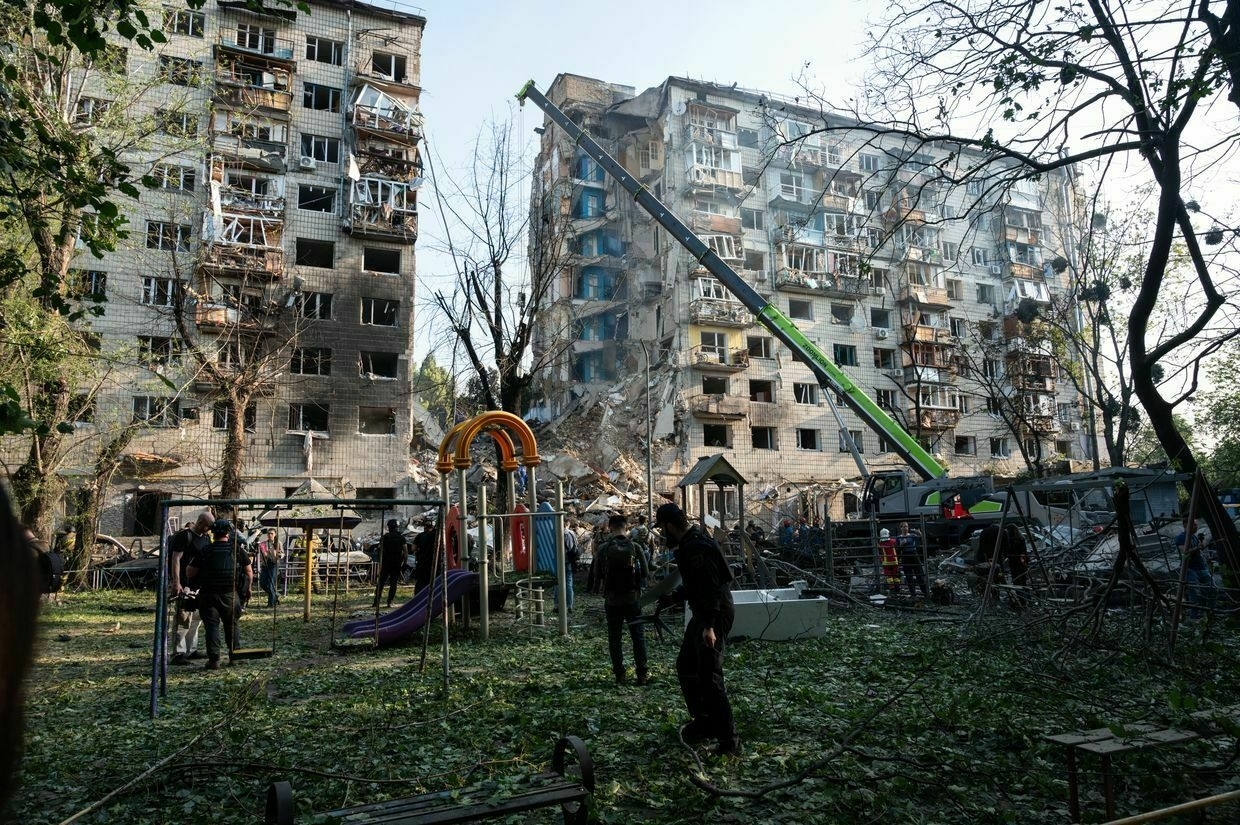
A residential building damaged by a Russian attack in Kyiv, Ukraine, on June 17, 2025. (Danylo Antoniuk / Anadolu via Getty Images) 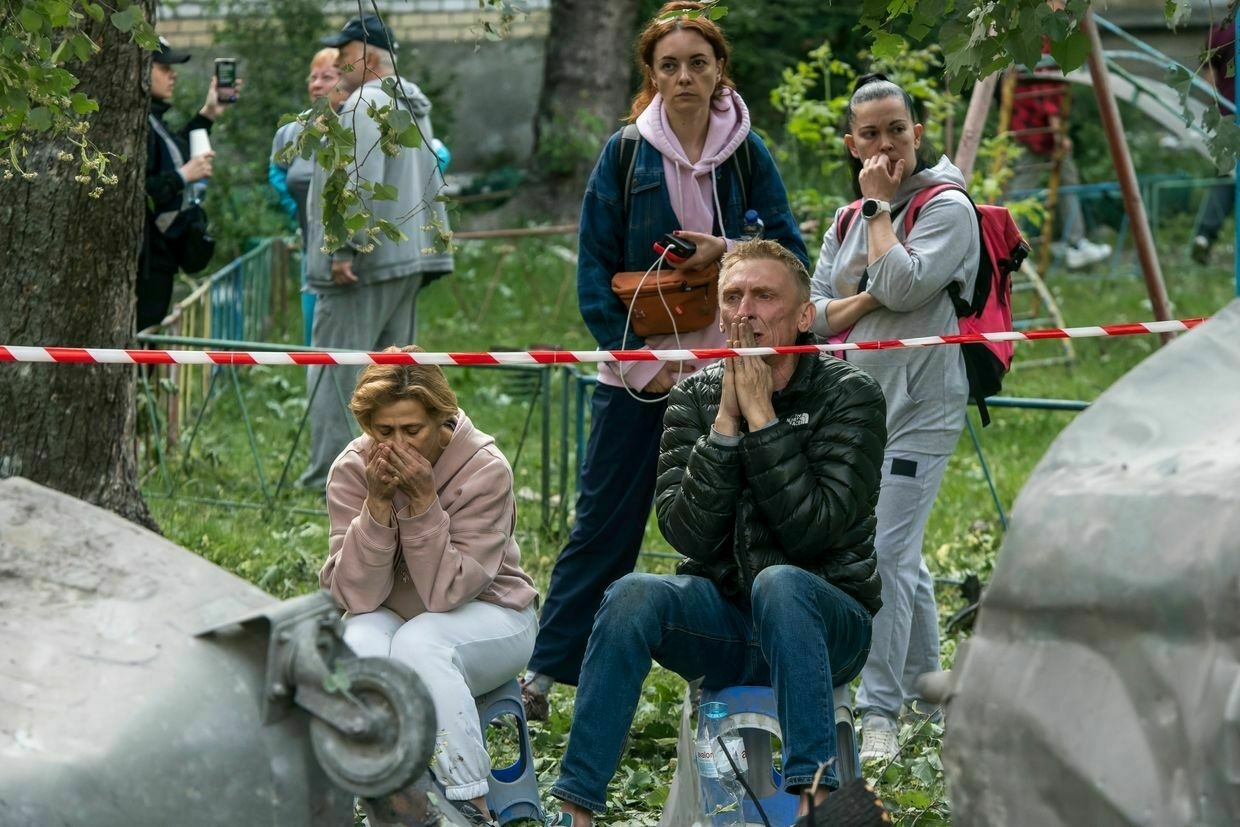
Family members of those still missing under the debris gather at the site of a residential building hit by a Russian ballistic missile in Kyiv, Ukraine, on June 17, 2025. (Maxym Marusenko / NurPhoto via Getty Images) "The windows were shattered, and smoke covered the place. We went outside and checked that everyone in the family was alive and well. It's the main thing," he added.
Over the past year and a half, there were only two days when Ukraine was not attacked by missiles and drones of various types, Ukrainian Foreign Minister Andriy Sybiga said during a joint press conference with his German Foreign Minister Johannes Wadefuhl on June 30.
Russia will soon be able to deploy more than 500 long-range drones a night to attack Ukraine as it ramps up production and builds new launch sites for them, a source in Ukraine's military intelligence (HUR) told the Kyiv Independent earlier this month.
According to the source, Russia's production rate for one type of drone — Shahed-type Gerans — is up to 70 units per day, from a reported 21 a day last year, and Moscow will soon have 12-15 new launch sites in operation.
China unveils its new ‘graphite bomb’ — here’s how they workChina’s state TV broadcaster has revealed details of a new “graphite bomb” that can cause a “complete loss of electricity” across an area of 10,000 square meters, or knock out entire power stations, the South China Morning Post reported on June 29. An animated video released by China’s CCTV showed a missile being launched from a ground-based launcher and then flying to a target where it releases 90 small submunitions. They then bounce on the ground before exploding amid a mock-up of an electri The Kyiv IndependentChris York
The Kyiv IndependentChris York
-
Russia responds to EU sanctions by blocking 15 European media outlets
On Monday, June 30, the Russian Foreign Ministry declared that Moscow will block access to websites of 15 European media outlets. This move comes as a response to the European Union's 16th sanctions package, which targeted eight Russian publications and broadcasting channels, including Eurasia Daily, Lenta, and "Krasnaya Zvezda".
Moscow accused European entities of "escalating the sanctions spiral," while refraining from specifying which European media outlets would be affected by the blockade. The Russian Foreign Ministry indicated that if restrictions on their domestic outlets and news channels are lifted, Russia would reconsider its stance on the European media.
The EU's 16th sanctions package was finalized on February 24, 2025, marking the third anniversary of Russia’s full-scale military invasion of Ukraine. This sweeping package included penalties against 48 individuals and 35 entities. Among the measures was an expansion in efforts to combat disinformation and a suspension of activities of eight more propaganda outlets targeting European audiences.
Publications such as EADaily/Eurasia Daily, Fondsk, Lenta, NewsFront, RuBaltic, SouthFront, Strategic Culture Foundation, and "Krasnaya Zvezda" were blacklisted for allegedly "supporting and justifying Russian aggression against Ukraine." Their broadcasting licenses within the EU have been suspended. Nevertheless, these sanctions don't prevent the outlets or their teams from conducting activities in the EU unrelated to broadcasting, such as research or interviews, according to Brussels officials.
-
Germany and Ukraine strengthen defense collaboration to counter Russian threats
Germany and Ukraine are planning to bolster their cooperation in the defense sector, according to Johann Wadephul, Germany's Foreign Minister, during a meeting with his Ukrainian counterpart Andriy Sybiha in Kyiv on Monday, June 30. This marks a "logical continuation" of Germany’s military assistance to Kyiv. According to Wadephul, both countries can benefit from defense cooperation. Germany stands to gain from a wide array of ideas and expertise from the Ukrainians in defense matters.
As part of this new phase of cooperation with Kyiv, there are plans to establish new joint ventures in the defense industry, aimed at allowing Ukraine to "produce defense products faster and in greater quantities." Wadephul emphasized the "enormous needs" of the embattled country.
Wadephul noted that Kyiv and Berlin are entering a new phase of cooperation. While Germany initially aided Ukraine with weapons, the need for German investment in the country is growing. He noted that companies are prepared to make such investments, albeit facing some bureaucratic and other obstacles.
Meanwhile, Andriy Sybiha expressed hope for receiving additional air defense systems from partners, as well as assistance in ramping up Ukraine's production capabilities. He reminded that Russia has intensified its missile and drone attacks on Ukraine, posing a threat to Euro-Atlantic security.
"The Russians target civilian structures to incite panic. To prevent this, bolstering our air defense systems is key," said the Ukrainian minister. He stressed the importance of producing air defense systems in Ukraine and bolstering an "aerial shield." "This cooperation with our German friends will also be mutually beneficial," Sybiha asserted.
During the talks with Wadephul, discussions centered on ways to halt Russian aggression against Ukraine and reduce the Russian threat to Europe. "We discussed achieving peace through strength, which entails two key components—strengthening Ukraine and increasing pressure on Russia. We're grateful to Germany for playing a significant role in enhancing Ukraine’s air defenses. German weapons save Ukrainian lives. We also discussed German participation in Ukraine's production of long-range capabilities and UAVs, marking a mutually beneficial collaboration," reported Ukraine's Foreign Minister.
Accompanying Johann Wadephul on his first visit to Kyiv are representatives from German defense companies, and the visit includes planned meetings with Ukrainian business and political leaders. A meeting with Ukrainian President Volodymyr Zelensky is also on the agenda.
Wadephul arrived in Kyiv with an unannounced visit early on June 30. The main focus is on further support for Ukraine in its war against Russia. Upon his arrival, the German minister stated that Russian President Vladimir Putin seeks Ukraine's capitulation, affirming that Germany will do everything possible to ensure Ukraine can successfully defend itself.
According to Germany’s Foreign Minister, Putin wants to prevent Ukraine from charting its own course. "His war is about nothing but subjugating Ukraine. Through relentless bombings, he terrorizes Ukrainians. Every day and night, people die in their homes—in Kyiv, in Odessa, in Dnipro. Yet, despite all the destruction and terror, Ukrainians continue to defend their country, their freedom, and their future with determination. They exhibit incredible courage, strength, and resilience, which deserve our deepest respect," he noted.
-
Ukrainian military again denies reports on Russian troops entering Dnipropetrovsk Oblast
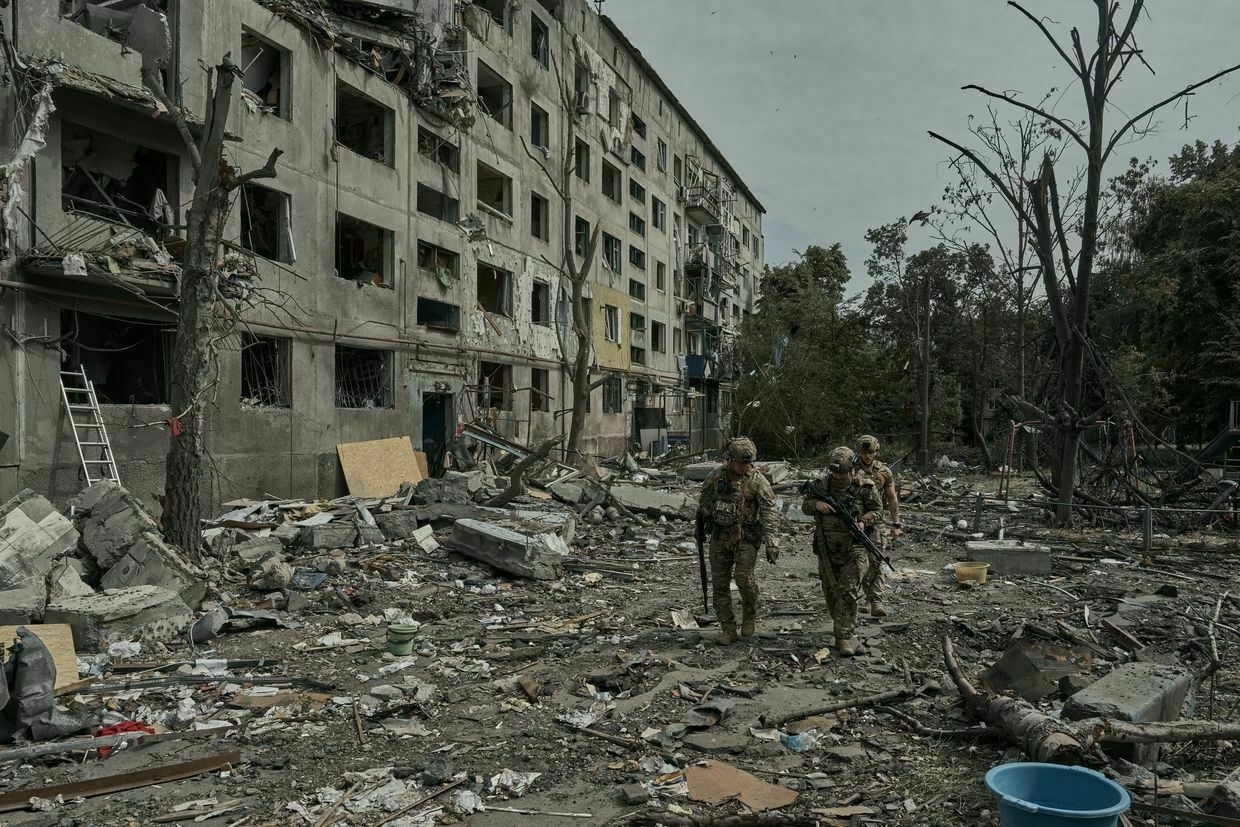
The Ukrainian military on June 30 denied the latest reports that Russian troops had entered Dnipropetrovsk Oblast.
Since June 29, the Ukrainian battlefield monitoring group DeepState has marked a “gray” zone in Ukraine’s Dnipropetrovsk Oblast, identifying potential fighting in this section of the front line. Near the village of Dachne in Dnipropetrovsk Oblast, the zone extends almost a kilometer into the region.
Meanwhile, Kremlin propagandists claimed on Telegram that Russian troops had captured Dachne.
The reports were denied by spokespeople of two Ukrainian brigades and the Khortytsia group of forces on June 30, Suspilne reported.
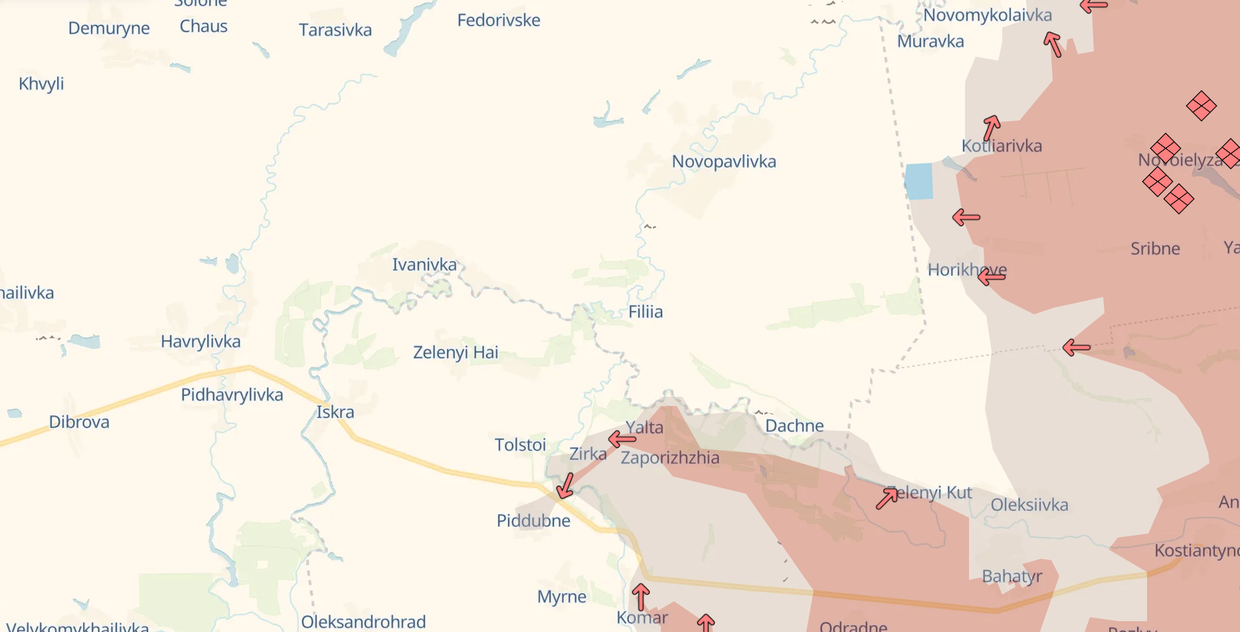
The estimated Russian advance in Donetsk Oblast as of June 29, 2025. (DeepState/OpenStreet Map) “There are very active battles in the villages located near the administrative border of the region,” Viktor Tregubov, spokesperson for Ukraine’s Khortytsia group of forces, told Suspilne, adding that Ukraine is holding the defense line near the villages of Yalta, Komar, and Shevchenkove.
Tregubov added that Russian troops had not entered Dnipropetrovsk Oblast as of noon on June 30.
The press service of the 3rd brigade of the National Guard, stationed in the nearby Pokrovsk sector of the front line, also denied the information about the breakthrough.
Nazar Voitenkov, spokesperson for the 33rd Separate Mechanized Brigade, based in Zaporizhzhia Oblast, also said that the Russian army had made no advances into Dnipropetrovsk Oblast.
“We are holding the defense line. The line is constantly changing, but the enemy has not broken through,” Voitenkov said.
Andrii Kovalenko, head of Ukraine’s counter-disinformation center, said on Telegram that fighting is taking place near the region’s administrative border, and Russian FPV (first-person-view) drones are also flying into Dnipropetrovsk Oblast,
But despite the heavy battles, there is no breakthrough, he added.
The statements come as Russian troops continue their offensive in Donetsk Oblast, pushing closer to Dnipropetrovsk Oblast — a major industrial region in central Ukraine.
In mid-June, Ukraine’s military also denied reports that Russian troops had entered the region, with President Volodymyr Zelensky saying that Ukrainian troops had intercepted Russian reconnaissance units attempting to breach Dnipropetrovsk Oblast.
Russia pulls its scientists out of Iranian nuclear plant, as Israeli strikes threaten decades of collaborationIsrael’s strikes on Iranian nuclear facilities have alarmed none more than Russia, the country that first brought nuclear power to Iran in defiance of Western objections. We’re “millimeters from catastrophe,” said Kremlin spokeswoman Maria Zakharova on June 18 in response to a bombing campaign that Israel launched against Iran on June 13. Decades of conflict with the West have united Iran and Russia, despite a cultural gulf between the two nations that dwarfs the Caspian Sea that physically di The Kyiv IndependentKollen Post
The Kyiv IndependentKollen Post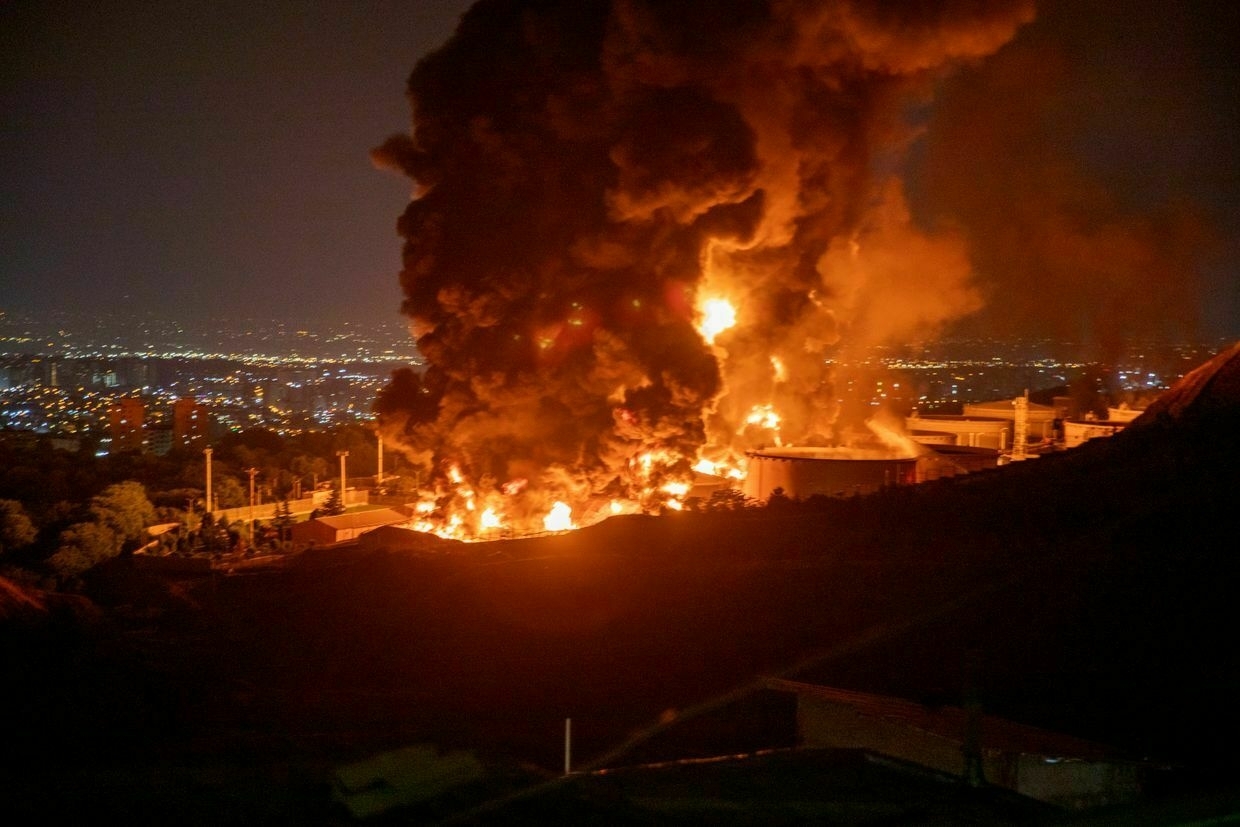
-
Intense battles continue as Russian forces struggle to advance in Ukraine's Sumy and Pokrovsk regions
In a recent news broadcast, Viktor Trehubov, a representative of the Ukrainian Khortytsia operational-strategic military grouping, highlighted that intense battles continue across all front lines, with Russian forces attempting to advance in multiple directions.
According to Trehubov, the Russian summer offensive hit a stalemate in the Sumy region, yet fierce battles persist on numerous fronts.
Trehubov remarked that this could pertain to the Sumy area, where Russians, despite extensive preparations, achieved little. However, he clarified that it's not entirely accurate to state that the Russian summer campaign was universally unsuccessful across the Khortytsia zone of responsibility.
In the Pokrovsk direction, relentless fighting continues, with the Russian troops retaining the capability to sustain them. There are over 50 battle engagements each day, and Trehubov believes the intensity of these attacks can't increase further.
"The enemy has crossed the Pokrovsk-Kostiantynivka highway and is attempting to advance northwards. This means they might move towards Kostiantynivka or target the Pokrovsk-Myronivsk agglomeration from the east, or perhaps both," Trehubov predicted.
While he noted that the Russian forces aren't actively nearing the agglomeration, the situation remains perilous.
"They must be pushed back beyond the highway, and all available means must be used to diminish their attacking capabilities," he emphasized.
Trehubov also mentioned Russian efforts to advance south of Pokrovsk towards the administrative border of the Dnipropetrovsk region, though these movements are already south of the city.
Trehubov emphasized the sheer number of 110,000 Russian troops operating in the Pokrovsk direction alone, suggesting that these numbers are unlikely to increase, as Russia has already deployed its resources in this region.
Andriy Demchenko from the State Border Service of Ukraine recently reported that defense forces have managed to stall the Russian advance in the Sumy region. The Russians suffer significant losses and hesitate to use armored vehicles.
Western media have reported that Russia has amassed 50,000 troops in the Sumy area. Russian forces are stationed just 20 kilometers from Sumy, with the Kremlin leveraging its superior numbers across the front.
-
China unveils its new 'graphite bomb' — here's how they work
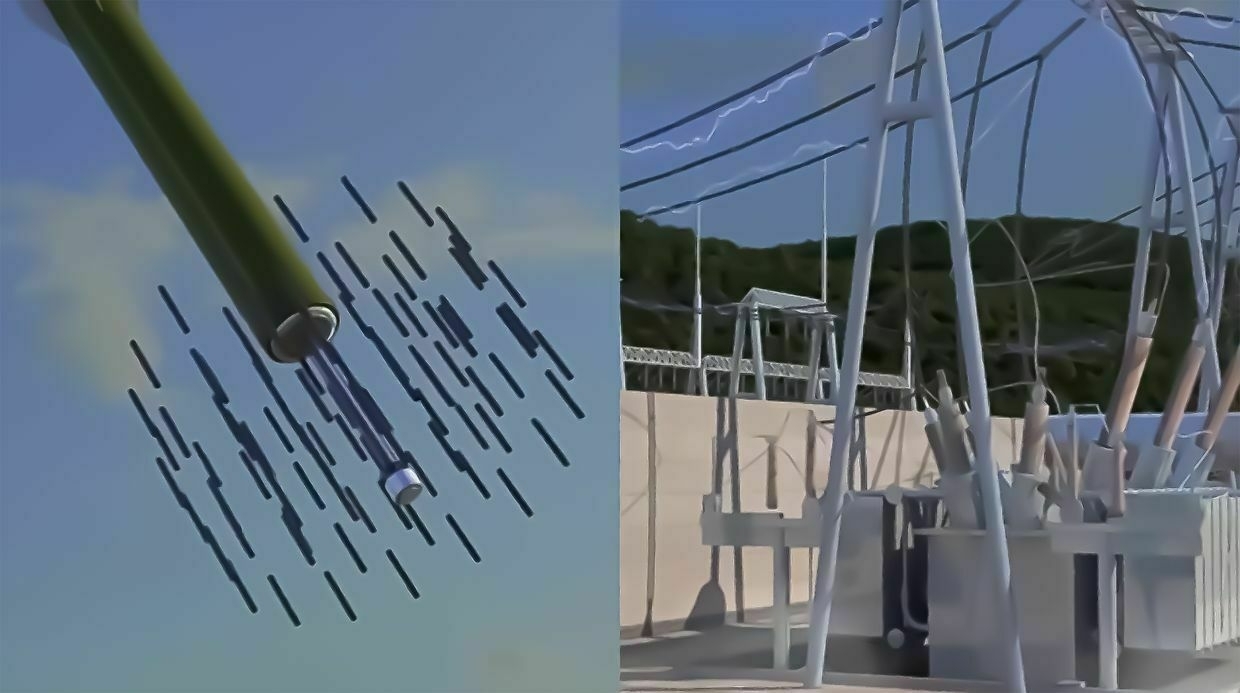
China’s state TV broadcaster has revealed details of a new “graphite bomb” that can cause a “complete loss of electricity” across an area of 10,000 square meters, or knock out entire power stations, the South China Morning Post reported on June 29.
An animated video released by China’s CCTV showed a missile being launched from a ground-based launcher and then flying to a target where it releases 90 small submunitions.
They then bounce on the ground before exploding amid a mock-up of an electrical substation. The video then shows electrical equipment malfunctioning.
The video of the new weapon comes amid heightened global tensions and the rising threat of a Chinese invasion of Taiwan.
China has also been a key ally to Russia during its full-scale war, helping Moscow evade Western sanctions and becoming the leading source of dual-use goods fueling the Russian defense industry.
How does a graphite bomb work?Graphite bombs, also known as “blackout bombs” or “soft bombs,” release a dense cloud of tiny graphite particles over a target area.
As graphite — even particles dispersed in a cloud — is an extremely good conductor of electricity, any power lines or electrical equipment in the target area will be short-circuited.
Such an attack on a civilian or military area will mean that any electrical equipment in that area will cease to function.
But released over a power station, the entire region it supplies will be affected as well.
Though a graphite bomb is classed as non-lethal, the effects of widespread power outages among a civilian population can cause casualties.
Are graphite bombs a new technology?Graphite bombs have been around for decades and are known to have been used by Western nations on two occasions.
In 1999, NATO used them to target five power plants in Serbia during the Kosovo war, leading to instant power cuts across 70% of the country.
The intention was to take out the Yugoslav Army’s radar and communications while minimizing civilian casualties, but the power outages also affected hospitals, public transport, and water and sewage systems.
“The military strategy of attack on civilian infrastructures is a war on public health.”
A subsequent report by the International Physicians for the Prevention of Nuclear War concluded that the "targeting of electrical generating plants, water treatment facilities, Danube bridges, railways and roads has adverse effects on civilian life, endangers health and seriously affects health care."
"The military strategy of attack on civilian infrastructures is a war on public health."
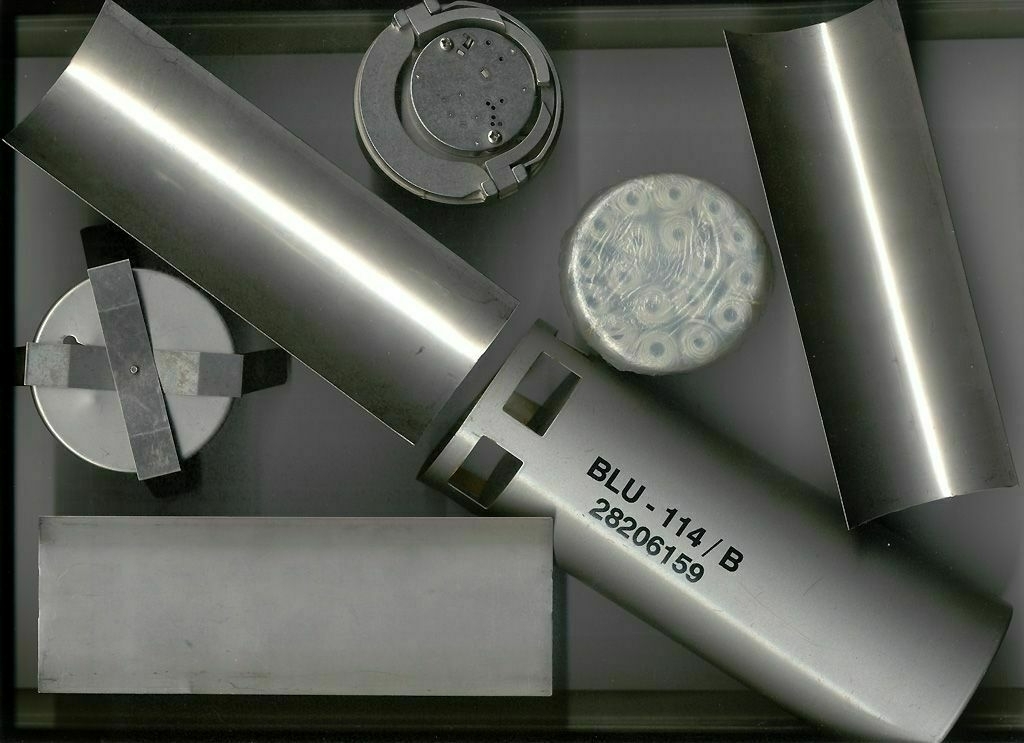
The BLU-114/B “Soft-Bomb,” a graphite bomb. (Marko M / Wikimedia) When asked about the weapon after the attack, Pentagon spokesperson Ken Bacon told the BBC: "We have certain weapons we do not believe it is appropriate to talk about — and this is one of them.
"It is highly classified, and it's not a weapon we choose to discuss publicly."
The U.S. armed forces also used graphite bombs during the 1991 Gulf War in Iraq, using its BLU-114/B graphite bomb to target two power distribution facilities and causing blackouts that lasted 30 days.
Does China's graphite bomb work in the same way as the U.S. version?Though there are few details on the exact workings of China's new graphite bomb, there do appear to be differences in how they can be deployed.
The BLU-114/B uses spools of carbon-fiber wire, which are dispersed over the target area. When these come into contact with a high voltage, they then vaporize into a fine cloud of particles.
According to what can be seen in the video released by CCTV, the Chinese bomb releases submunitions that self-detonate in order to create a cloud of graphite particles.
Which other countries possess graphite bombs?South Korea said in 2017 that it had developed its own graphite bomb and was ready to deploy it against North Korea in the event of a war.
Russia reportedly closes Crimean Bridge amid explosions in KerchWitnesses reported hearing multiple blasts and observing Russian air defense systems in action. The Kyiv IndependentAnna Fratsyvir
The Kyiv IndependentAnna Fratsyvir
-
Russian economy faces mounting challenges amid rising military spending and banking instability
In a stark address at Sberbank's annual shareholders meeting on June 30, German Gref, the head of Russia's largest bank, painted a bleak picture of the Russian economy's future. The country is grappling with a rapid surge in military spending, inflation spikes, and a significant hike in the central bank's key rate, hindering quick economic fixes. The forecast for 2026 doesn't offer much solace either, with expectations of continued challenges.
"The situation heavily hinges on geopolitics, GDP growth dynamics, and the Central Bank's interest rates. But it's already clear that the year will not be easy since the first half of 2026 is at least notably uncertain now," Gref remarked, as quoted by RBC.
Sberbank is witnessing "deteriorating credit portfolio quality" and increasing requests for debt restructuring, affecting both individual and corporate clients, Gref acknowledged. He remains hopeful, however, saying, "Hopefully, as always, we will find common plans to navigate these challenging times."
Behind closed doors, Russian bankers express concern that the nation might face a full-blown banking crisis within the next 12 months due to rising loan defaults, Bloomberg reports, citing bank executives. Insiders estimate the scale of this financial headache to be in the trillions of rubles.
The macroeconomic analysis and forecasting center, CMASF, linked to the government, predicts that companies making up 17% of the economy's revenue are at risk. Sectors under financial stress include the fishing and mining industries, particularly coal, clothing and leather goods manufacturing, automotive production and trade, oil refining, construction, water transport, and postal services.
Inter-business payment delays are on the rise as well. Between October last year and March this year, mutual payment defaults increased by 11.6%, with the manufacturing sector witnessing a nearly 40% jump—a historic high since the COVID-19 shock.
Many firms are nearing default, stated Alexander Shokhin, head of the Russian Union of Industrialists and Entrepreneurs, during the St. Petersburg International Economic Forum (SPIEF 2025).
Since Russia's conflict with Ukraine began, banks have extended 34 trillion rubles in new loans to corporations—equivalent to 17% of the nation’s GDP. As of June 1, total corporate debt to the banking system soared to 86.2 trillion rubles, marking a 65% increase since the start of 2022. Nearly half of this debt is attributed to 78 of Russia’s largest companies. Of these, one in six companies now has to allocate at least a third of their pre-tax income just to cover interest payments, and 8% of the debt belongs to firms that can't even generate enough to pay interest.
"Individual bankruptcies are possible," warned the Central Bank at the end of May. According to the ACRA rating agency, bank loans amounting to 3.7 trillion rubles—equivalent to 20% of the banking system's capital—could turn problematic.
-
The Kyiv Independent launches 'How to help Ukraine' newsletter
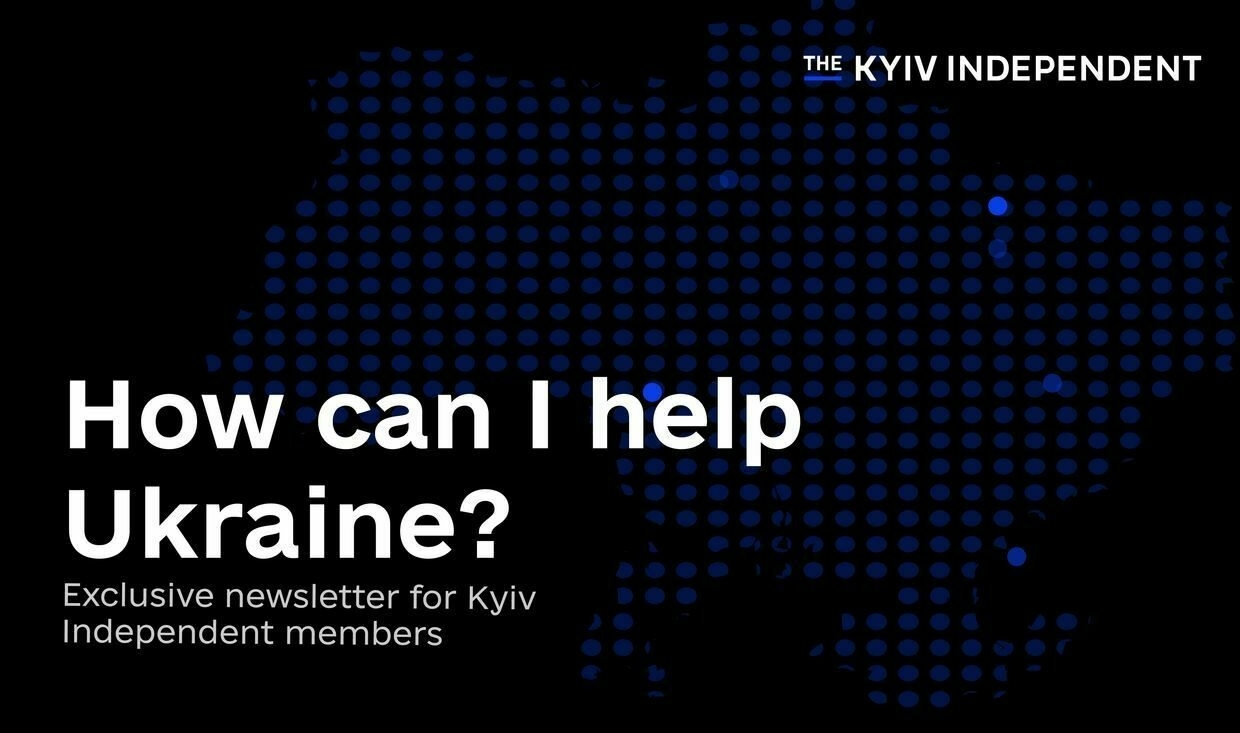
The Kyiv Independent has launched a new membership benefit in direct response to the most frequently asked question from its members — “What more can I do to help Ukraine?"
The “How to help Ukraine” newsletter will help members exercise their agency, get more involved in efforts to support the country, with donation suggestions and even volunteering opportunities, all while raising awareness of Ukrainian civil society.
“We always knew that our community was passionate about supporting us, but that wasn’t the only thing driving them,” Daryna Shevchenko, CEO of the Kyiv Independent said.
“Many of our members have repeatedly expressed a sincere desire to help Ukraine in ways that go beyond donating to the Kyiv Independent. Now, we’ve finally found the resources to act on that."
The first edition sent on June 12 raised $16,500 in just four days for the Leleka Foundation, a U.S.-Ukrainian charity that procures medical supplies for those on the front lines.
The Kyiv Independent conducted over a dozen in-depth interviews with supporters to find out exactly what they wanted, and the "How to help Ukraine" newsletter is the result — and it's already allowed members to give help where it's most needed.

Screengrab from the Leleka Foundation website. (Leleka Foundation) The first edition sent on June 12 raised $16,500 in just four days for the Leleka Foundation, a U.S.-Ukrainian charity that procures medical supplies for those on the front lines.
This money helped purchase medical backpacks for front-line medics containing tourniquets, bandages, hemostatic dressings, chest seals, soft splints, trauma shears, and burn treatment — each backpack has enough equipment to save 10 lives.
Ongoing support for organizations like Leleka Foundation is vital for Ukraine — it was founded in December 2014, when several Ukrainians in the U.S. joined forces with volunteer initiatives in Ukraine to procure and supply medical and first-aid equipment for paramedics, ambulances, and hospitals.
Leleka is currently a team of 20 staff members and volunteers across two continents and donations like those raised as a result of the "How to help Ukraine" newsletter will allow them to continue their work during uncertain times.
The "How to help Ukraine" newsletter will highlight one such organization each month, giving members the opportunity to donate money, time, or support to a group they can be assured shares the same values and mission as the Kyiv Independent.
"The desire to help Ukraine — more deeply and in more ways — is a passion we at the Kyiv Independent wholeheartedly share with our community," Shevchenko said.
For more information, please contact: news@kyivindependent.com
5 ways you can support Ukraine — even if your government doesn’t want toEditor’s note: This is an edited version of a guide for our members published on Feb. 24, 2025. If you would like to join a community of people united by wanting to help Ukraine, consider becoming a member today. U.S. President Donald Trump’s public spat with President VolodymyrThe Kyiv IndependentBrooke Manning
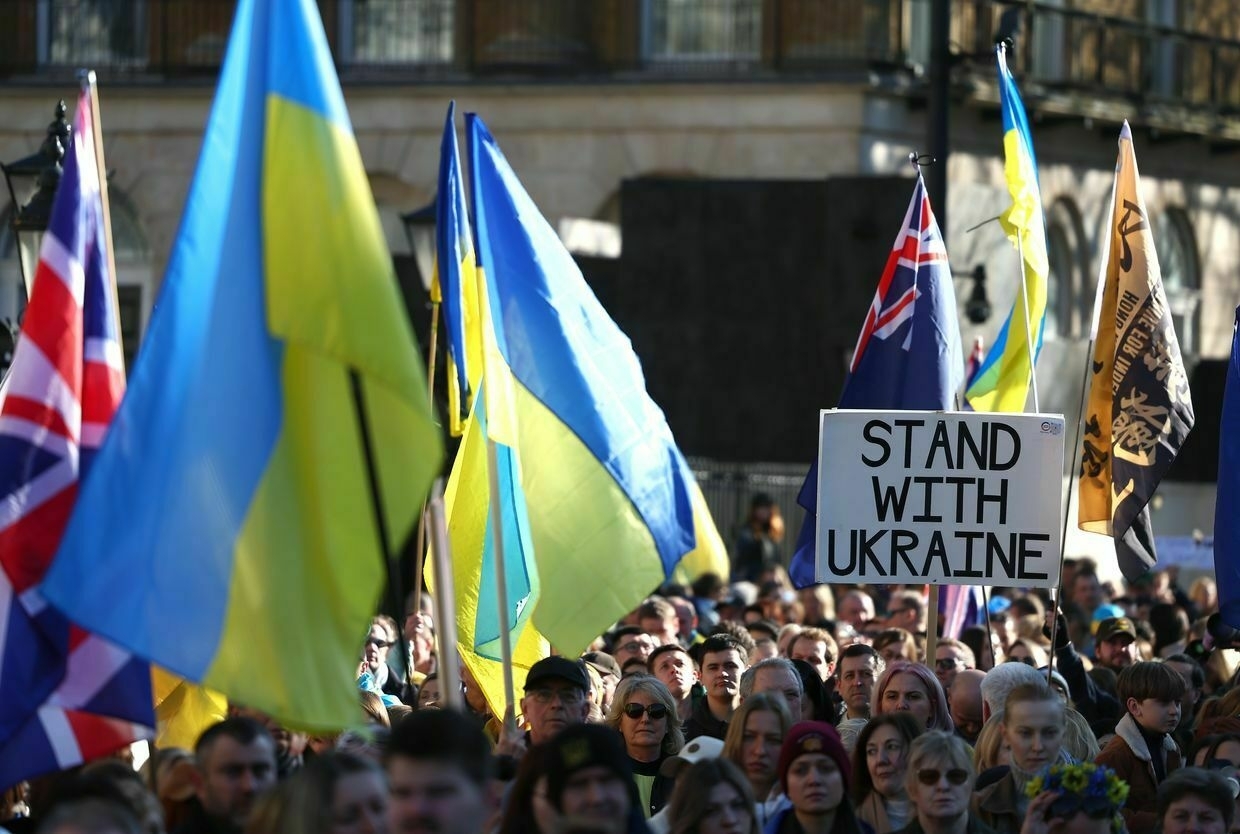
-
Amid Russian economy warnings, Lavrov says NATO's increased defense spending will lead to 'collapse' of alliance
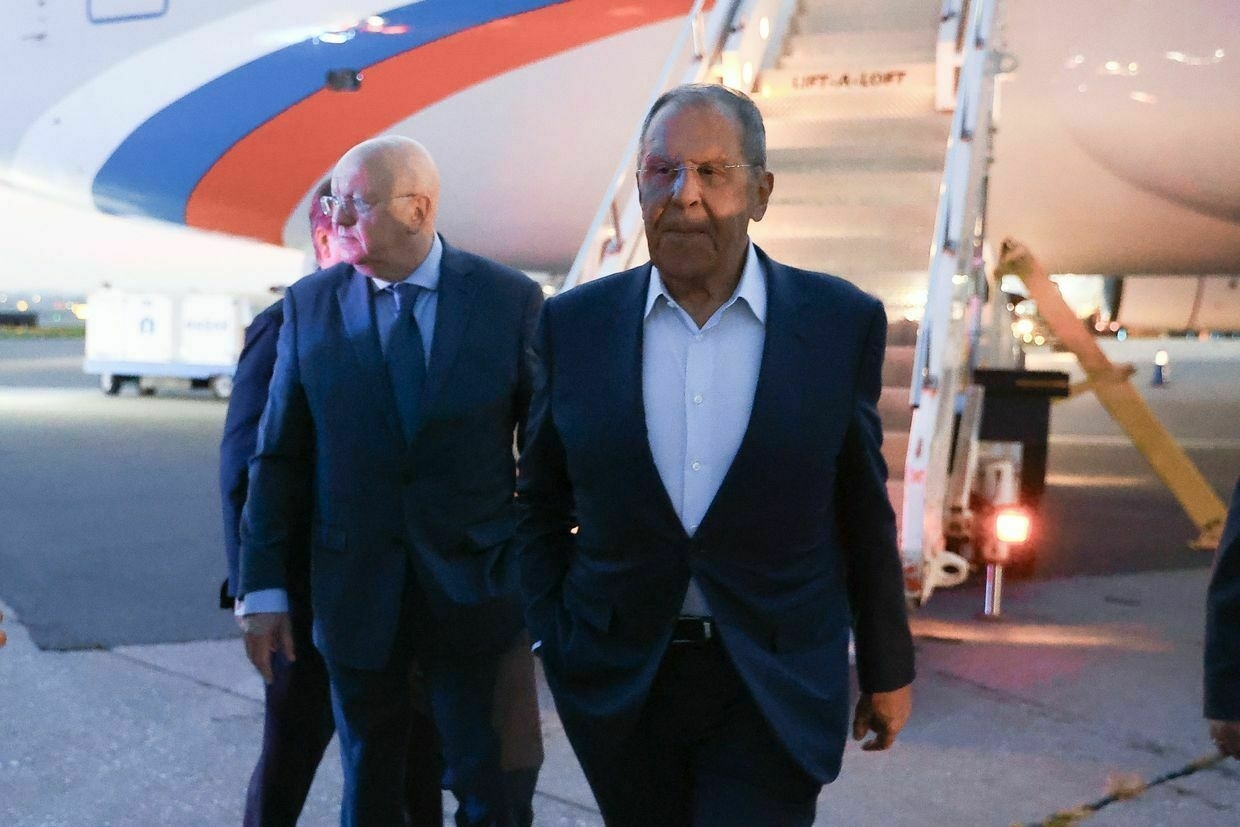
NATO’s increased defense spending will lead to the “collapse” of the alliance, Russian Foreign Minister Sergei Lavrov said on June 30, despite Russian officials recently warning that Moscow’s own military expenditure is driving the country towards recession.
Lavrov’s comments come after NATO leaders last week approved a new defense spending benchmark, committing members to spend at least 5% of GDP on defense and security-related expenditures by 2035, a goal long pushed by the U.S. and endorsed by NATO Secretary General Mark Rutte.
The week previously, and in a rare public sign that all is not well in Russia, two high-ranking Moscow officials issued separate warnings about the state of the country’s economy.
Russian Central Bank Governor Elvira Nabiullina and Economy Minister Maxim Reshetnikov both highlighted that amid the Kremlin’s full-scale war against Ukraine, the tools Moscow once relied on to maintain wartime growth are nearly exhausted.
Polish Foreign Minister Radoslaw Sikorski on June 26 said an arms race between Russia and NATO could lead to Russian President Vladimir Putin’s downfall.
“Since (Polish Foreign Minister Radoslaw Sikorski) is such a predictor, he probably foresees that a catastrophic increase in the budget of NATO countries, according to my estimates, will also lead to the collapse of this organization,” Lavrov reportedly said.
Putin last week announced that Moscow plans to cut its military expenditure beginning next year, in a rebuke of NATO members' plans to increase defense spending to 5% of GDP.
“We are planning to reduce defence spending. For us, next year and the year after, over the next three-year period, we are planning for this,” Putin said, though he did not provide concrete details.
“Europe is thinking about how to increase its spending, on the contrary. So, who is preparing for some kind of aggressive actions? Us or them?"
Western officials and analysts point to Russia’s surging military expenditures amid its ongoing full-scale invasion of Ukraine. In 2024, Russia’s defense budget reportedly rose 42% in real terms, reaching $462 billion, surpassing the combined spending of all European nations, according to the International Institute for Strategic Studies.
NATO allies have cited Russia’s military buildup, sabotage campaigns, and continued aggression against Ukraine as reasons to accelerate defense investments. Rutte warned that Russia could rebuild its military capacity to threaten NATO territory within five years, urging members to act with urgency.
As Ukraine bleeds, Western opera welcomes back pro-Putin Russian singer Anna NetrebkoMore than three years into Russia’s full-scale war against Ukraine, many Western cultural institutions that had distanced themselves from Russian artists as a gesture of solidarity with Ukraine are now reversing course. The U.K.’s Royal Ballet and Opera House announced on June 23 that its 2025-2026 cinemaThe Kyiv IndependentKate Tsurkan
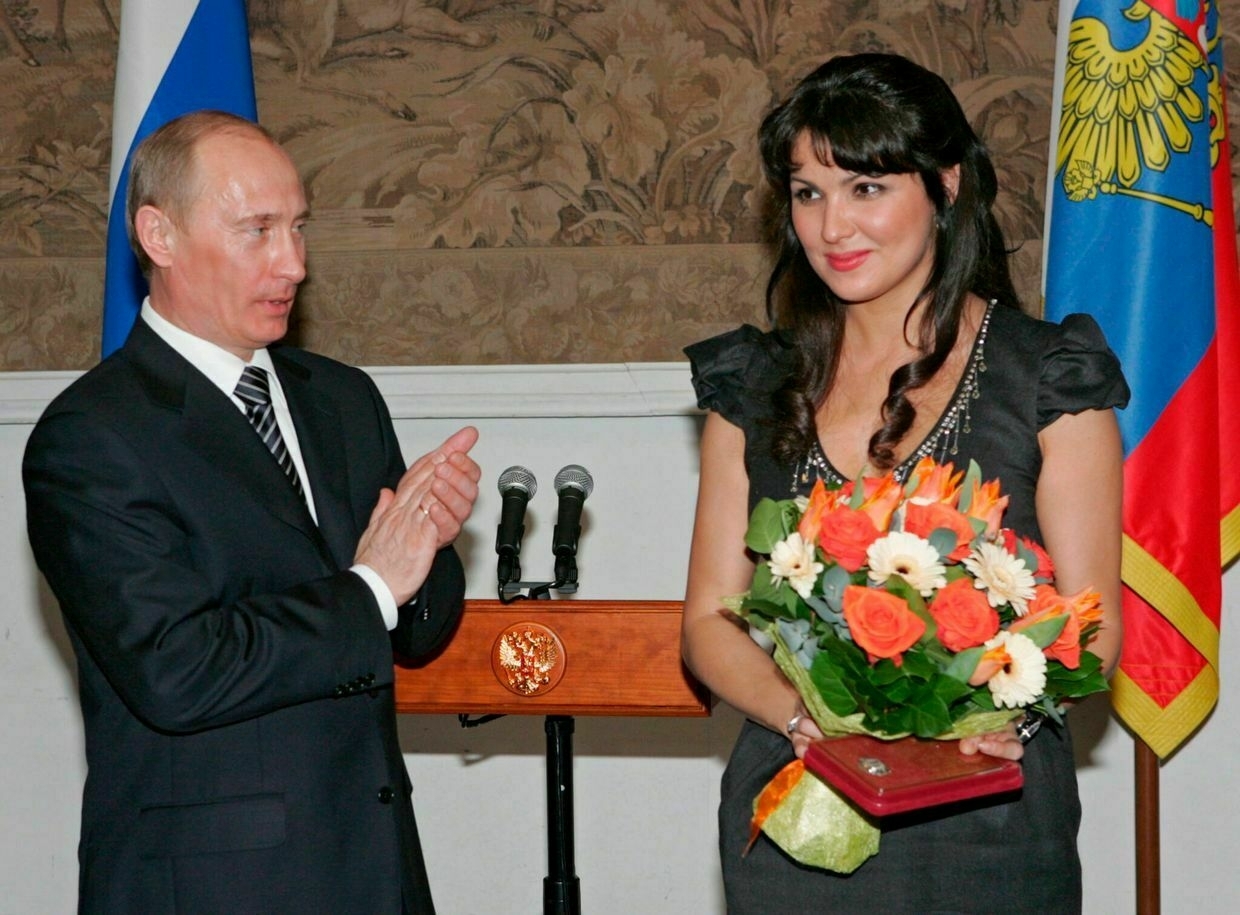
-
Germany vows to pursue 'every path' to boost Ukraine's air defenses, FM Wadephul says in Kyiv
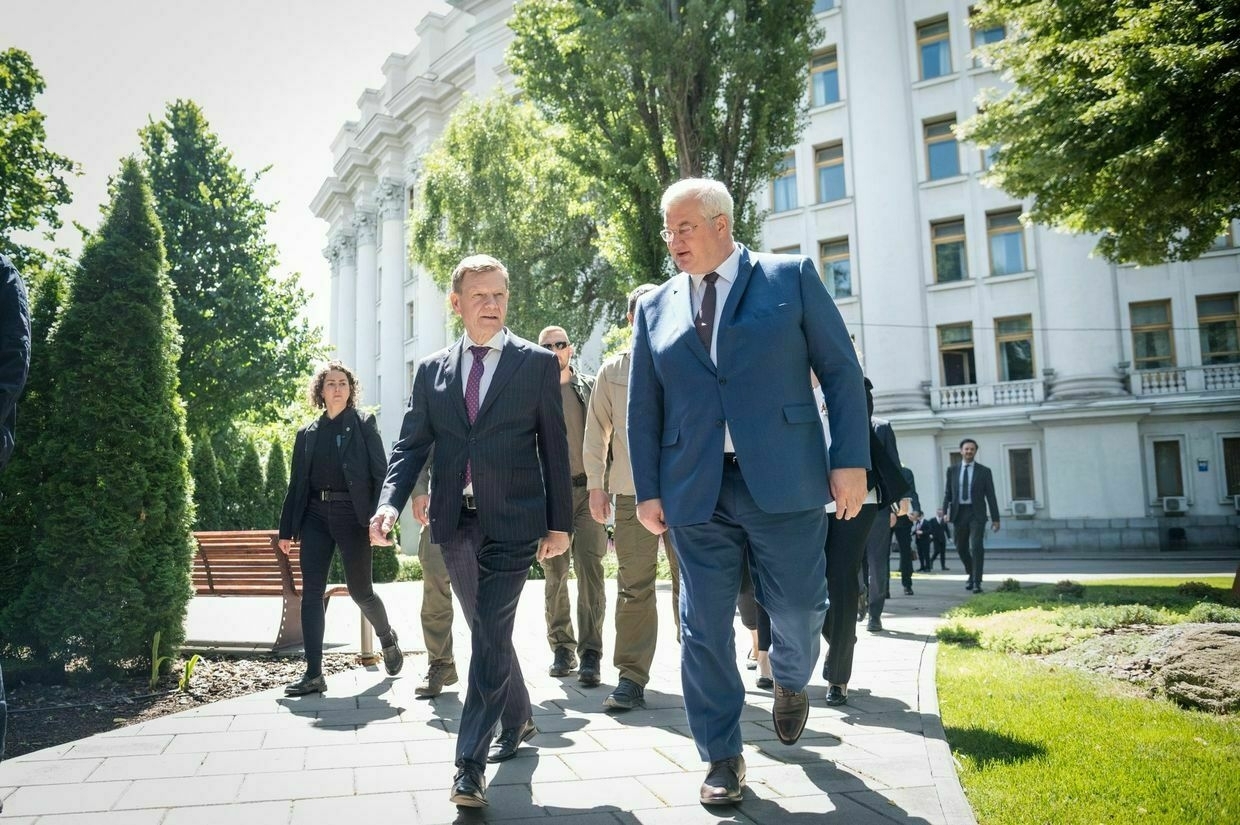
German Foreign Minister Johann Wadephul pledged on June 30 that Berlin is exploring “every possible path” to provide Ukraine with additional air defense systems, amid intensifying Russian missile and drone attacks, according to RBK-Ukraine.
Speaking at a press conference during his visit to Kyiv, Wadephul said Germany is working with its defense industry, European allies, and the U.S. to urgently secure more systems for Ukraine’s air shield.
“We are going down every path available,” Wadephul said. “The German defense industry is trying to expand its capacity. We’re speaking with our European partners, and I believe we must also move forward with the United States."
He added that he remains in close contact with German Defense Minister Boris Pistorius to assess whether existing systems from Germany’s own stockpiles can be redirected to Ukraine.
Wadephul’s visit came just a day after Russia launched its largest aerial assault on Ukraine to date, firing 477 drones and 60 missiles in a 24-hour period. In a video message posted on social media earlier on June 30, the German minister described Ukraine as “a country once again haunted by war,” and reaffirmed Germany’s solidarity.
“Germany stands by Ukraine,” Wadephul said. “We must not allow freedom to be lost here. We have to support this country and ensure that a ceasefire is finally achieved. (Russian President Vladimir) Putin must realize he cannot continue this war and must negotiate a peace solution."
Guten Morgen aus der Ukraine 🇺🇦 pic.twitter.com/mbvfuE0niz
— Johann Wadephul (@AussenMinDE) June 30, 2025Ukrainian Foreign Minister Andrii Sybiha welcomed Wadephul's visit in a post on X, saying the two discussed how to counter Russian aggression and deepen bilateral ties.
Glad to welcome my German colleague and friend @AussenMinDe Johann Wadephul.
— Andrii Sybiha 🇺🇦 (@andrii_sybiha) June 30, 2025
We spoke about steps to counter Russian aggression against Ukraine, neutralise the threats posed to Europe by the aggressive Russian regime, and ways to further strengthen the ties between our nations.… pic.twitter.com/38ZX97SfXbSybiha said they also spoke about Germany's role in Ukraine's development of long-range capabilities and drones, calling it "win-win cooperation"— as well as Berlin's support for the 18th EU sanctions package and Ukraine's path to EU membership.
"I am grateful to Minister Wadephul for his moral clarity and personal contribution to Ukraine's resilience," Sybiha added.
Wadephul is expected to meet with President Volodymyr Zelensky later during his visit.
The German foreign minister emphasized that witnessing the destruction firsthand is critical to understanding Ukraine's suffering and the urgency of sustained international support.
"This is indeed a difficult situation," Wadephul said. "And that is why German solidarity is so important right now."
Warfare in Ukraine has changed… againThe Kyiv Independent’s Francis Farrell explains a new modification of the standard first-person view (FPV) drone that already once transformed the way war is fought. Fiber optic cable now used to connect drone operators to FPVs ensures a perfect image and control experience all the way to the target — and cannot be spotted by enemy drone detectors.The Kyiv IndependentFrancis Farrell

-
Hungarian FM says US lifted Russian sanctions that hindered expansion of Paks Nuclear Power Plant
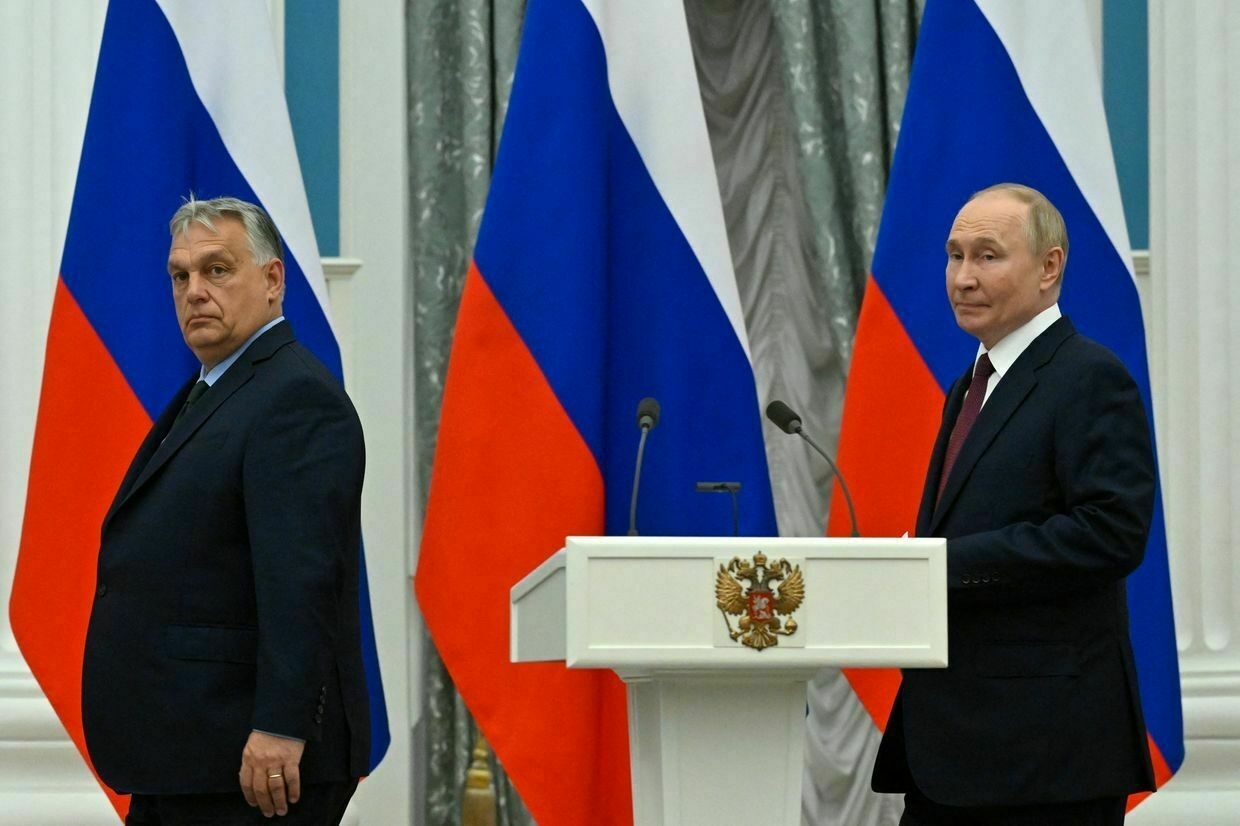
Hungarian Foreign Minister Peter Szijjarto said on June 29 that Washington has lifted sanctions that hindered the expansion of the Paks Nuclear Power Plant, where Russia’s state-owned energy company Rosatom is to build two new reactors.
“Construction of the major pieces of equipment for the Paks nuclear plant is proceeding in Russia and France,” Szijjarto said, as cited by Bloomberg.
“On-site in Paks, construction can now proceed at a faster pace."
The expansion project, which has endured significant delays, is led by Rosatom and will add to the four active reactors.
The anti-Russian sanctions were imposed by former U.S. President Joe Biden’s administration. The U.S. has not reacted to Szijjarto’s comments so far.
Since returning to the Oval Office in 2025, U.S. President Donald Trump has tried to push Russia and Ukraine into peace talks to end the war at all costs and has not yet imposed additional sanctions on Russia for its ongoing war against Ukraine.
Meanwhile, Russia has found loopholes to circumvent sanctions, such as using its shadow fleet or relying on other financial mechanisms.
Hungary’s Energy Minister Csaba Lantos said in 2023 that he expects the Paks II to be finished in 2032.
Vladyslav Vlasiuk, the Ukrainian president’s commissioner for sanctions, said the situation with the expansion of the nuclear plant is “much more complicated.” He accused the Hungarian foreign minister of “manipulation."
Vlasiuk explained in a Facebook post that Paks faces a sanctions exemption from the EU. The U.S. has not lifted the sanctions, though there is a new licence that offers the possibility of conducting transactions related to civilian nuclear energy that began prior to November 2024.
EU fails to adopt new Russia sanctions due to Hungarian, Slovak opposition, source saysUnlike Ukraine-skeptic Hungarian Prime Minister Viktor Orban, Slovakia has not previously attempted to block EU sanctions. The Kyiv IndependentKateryna Hodunova
The Kyiv IndependentKateryna Hodunova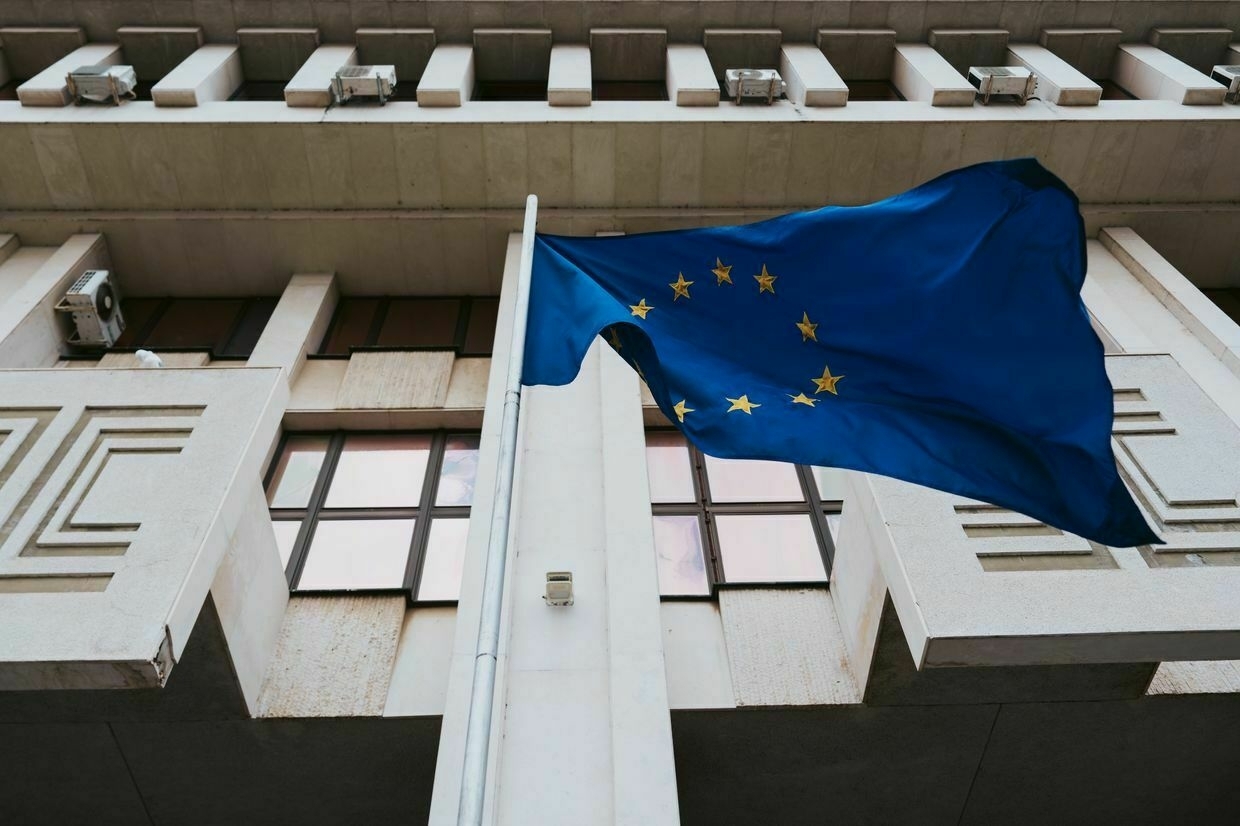
-
Trump meets Zelensky at NATO summit | Ukraine This Week

In the latest episode of Ukraine This Week, the Kyiv Independent’s Anna Belokur explains key takeaways from this week’s NATO summit, where Ukrainian President Volodymyr Zelensky and U.S. President Donald Trump held their third in-person meeting since Trump’s return to office. Also, Ukraine’s anti-corruption bureau charges the highest-ranking serving official in a land grab case involving public land, illegal apartments, and hundreds of thousands of dollars.
-
Zelensky signs decree to withdraw from Ottawa Convention banning anti-personnel mines, lawmaker says
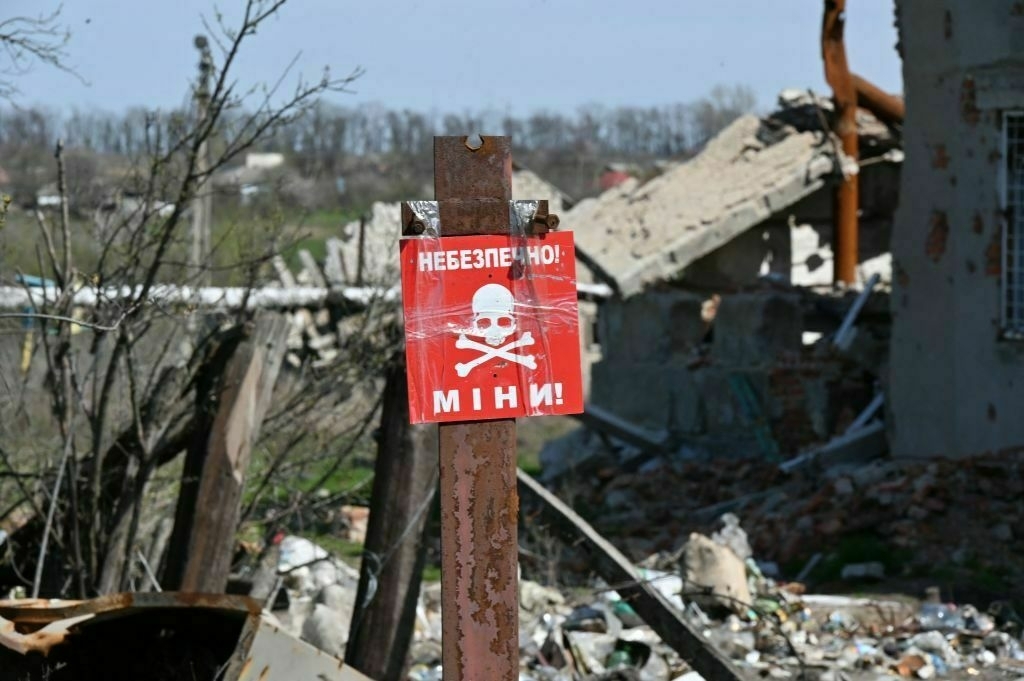
President Volodymyr Zelensky signed a decree to withdraw from the Ottawa Convention banning anti-personnel mines, a step that follows the Baltic nations and Poland’s move to boost their defense as the war rages on in Ukraine.
The 1997 treaty, joined by over 160 countries, bans the use, production, stockpiling, and transfer of anti-personnel landmines in efforts to protect civilians from the scattered explosives that could still injure them long after the conflict is over.
“Russia is not a party to this Convention and is massively using mines against our military and civilians,” lawmaker Roman Kostenko, secretary of the parliament’s defense committee, said in a post on Facebook.
Earlier in March, the Baltic states and Poland announced their intention to withdraw from the Ottawa Convention, a significant shift in defense policy that shows how countries near Ukraine are preparing for a potential war in Europe.
Anti-personnel mines are scattered across the battlefield in Ukraine, with soldiers and civilians often losing their feet or limbs due to detonations. Territories liberated by Ukraine since 2022 have been heavily covered with mines, making it extremely difficult and dangerous to clear them. Russia has used more than a dozen variants of anti-personnel mines since it launched a full-scale invasion of Ukraine in 2022, according to Human Rights Watch’s June report.
In a surprise move that angered Moscow, the Biden administration in 2024 approved the provision of anti-personnel mines to Ukraine. Then Defense Secretary Lloyd Austin said it was to help Ukraine stall the Russian advances in the east as the front-line situation deteriorated.
“This is a step that the reality of war has long demanded,” Kostenko said in the Facebook post announcing a significant move forward in withdrawing from the major mine treaty.
Now that Zelensky signed the decree, which has not been officially published yet, enacting the decision of the National Security and Defense Council of Ukraine, it will land on the parliament’s table, Kostenko said. The dates when the decision will take effect are still unclear.
Russia revives obsolete T-62 tanks amid equipment shortages, Ukraine’s intel claims“The key factors limiting the ability to produce modern armored vehicles in Russia are a lack of industrial capacity and a shortage of imported high-tech components,” Ukraine’s military intelligence said. The Kyiv IndependentKateryna Denisova
The Kyiv IndependentKateryna Denisova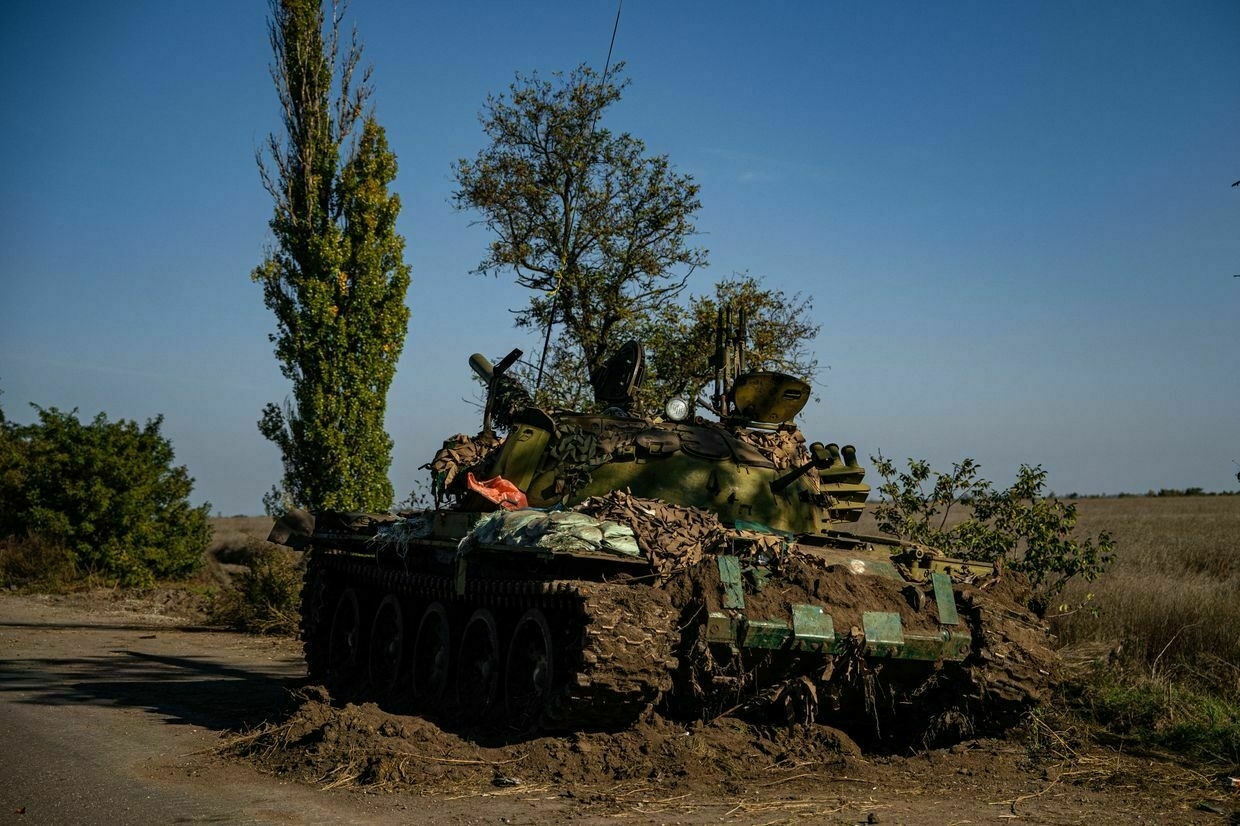
-
F-16 pilot killed during Russia's overnight massive air attack, Air Force says
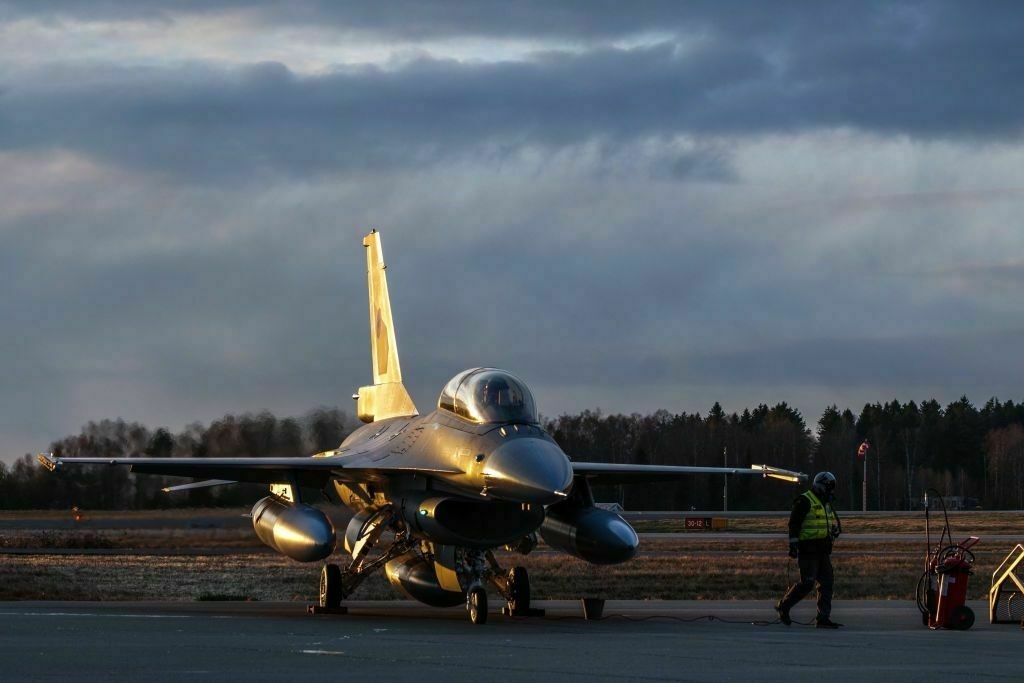
A lieutenant colonel flying a U.S.-made F-16 fighter jet was killed during the overnight aerial strike while on duty, the Air Force said on June 29.
Russia launched a “massive” missile and drone strike across Ukraine early on June 29, unleashing over 500 aerial targets, including various types of missiles and attack drones, according to the Air Force’s statement.
Maksym Ustymenko, born in 1993, was killed after shooting down seven aerial targets, the Air Force said in a statement. The Air Force added that his aircraft was damaged while he was trying to shoot down the last one, losing altitude and crashing.
“Maksym Ustymenko did his best to take the plane away from the settlement, but did not have time to eject,” the Air Force said on Telegram, honoring that he died “like a hero.”
“The work of Ukrainian pilots is extremely dangerous and risky, both when striking enemy ground targets and repelling air attacks,” the Air Force added, saying that the F-16 pilots destroy dozens of Shahed-type drones.
Russia has intensified its aerial campaign on Kyiv and other cities over the past month. President Volodymyr Zelensky said that Russia has launched over 2,700, or roughly 9.5%, of the total number of Shahed-type drones deployed during the entire full-scale war in June alone.
Though well protected with Western air defense systems compared to other cities, Kyiv has also faced a number of deadly attacks in June, with the June 17 missile and drone strike on Kyiv killing 30.
The Air Force said that Ukraine had to use “all available means” to repel the Russian aerial attack overnight on June 29, including elite F-16 jets.
Ukraine received its first batch of F-16 jets in the summer of 2024, but it has not revealed many details about how and where they are used in operations since they are a high-priority target for Moscow. Their pilots have received months of training abroad.
Ukraine war latest: US signals more Patriot missiles for Kyiv after Zelensky-Trump talks at NATO summitKey developments on June 25: * Zelensky, Trump hold talks on NATO summit sidelines * ‘Something unknown’ hits key Russian drone facility in Taganrog, Ukrainian official says * Russia has launched over 28,000 Shahed drones at Ukraine since 2022, with nearly 10% fired in June alone, Zelensky says * Donetsk Oblast city “onThe Kyiv IndependentThe Kyiv Independent news desk
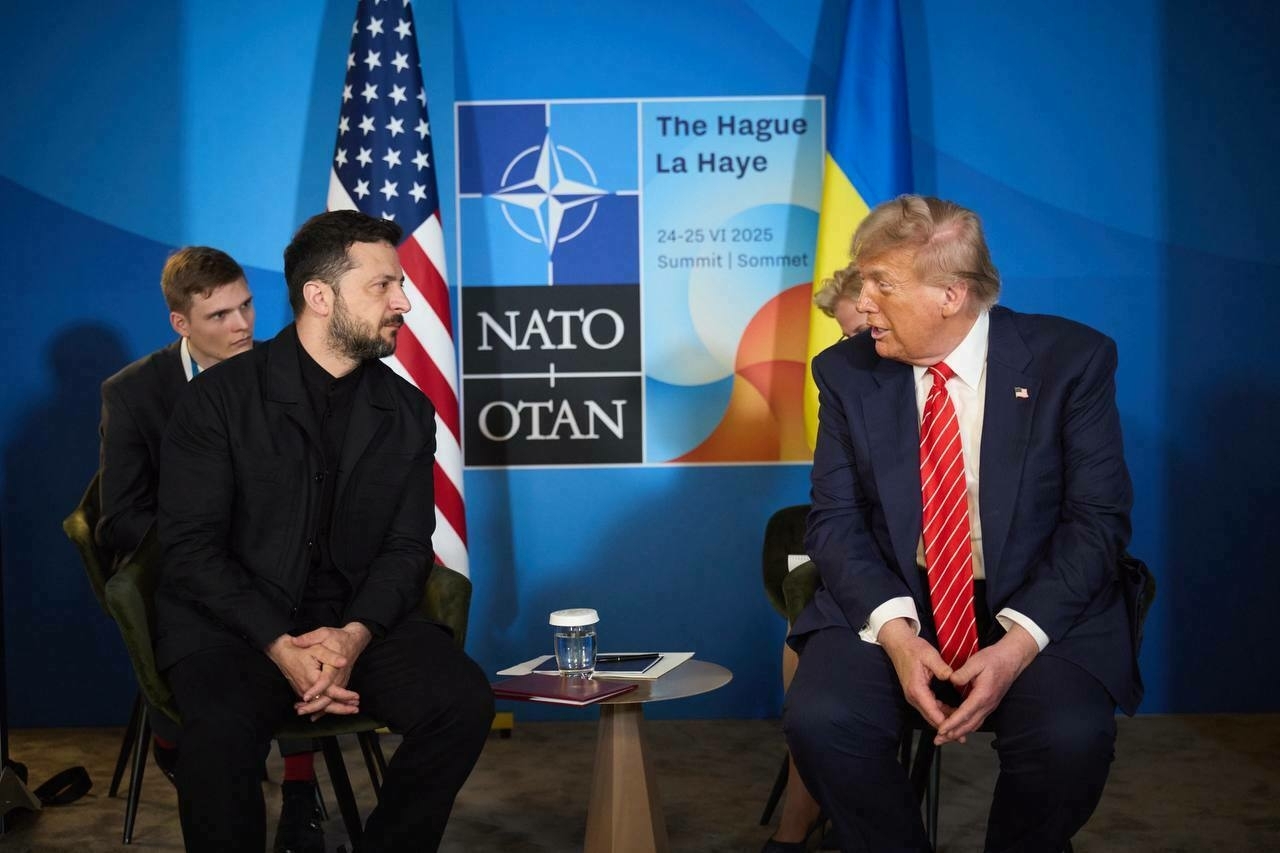
-
General Staff: Russia has lost 1,018,940 troops in Ukraine since Feb. 24, 2022
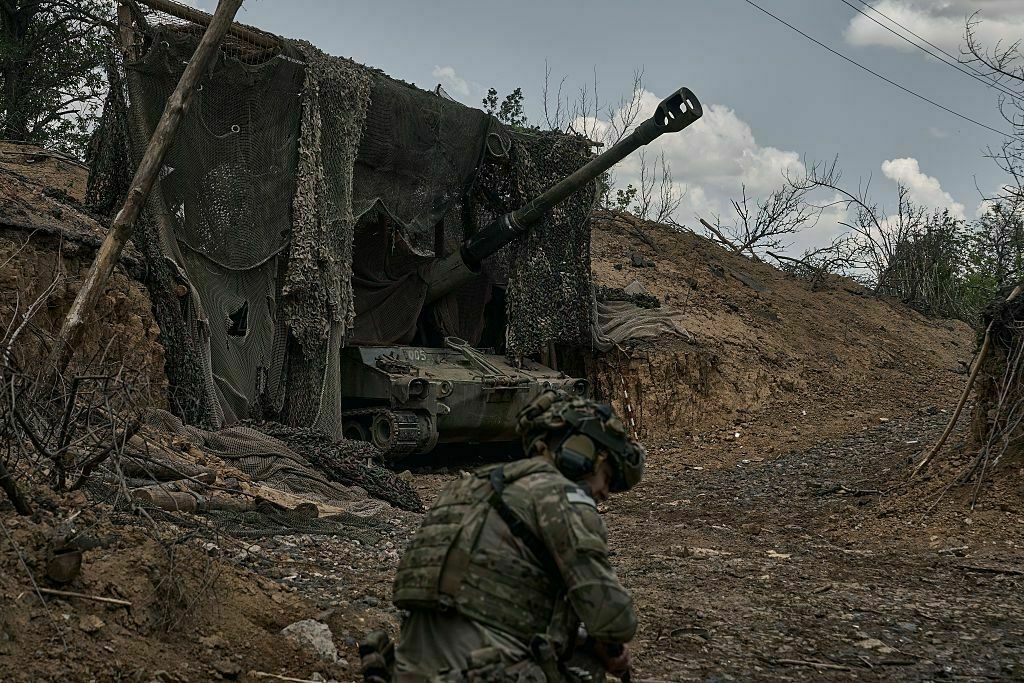
Russia has lost around 1,018,940 troops in Ukraine since the beginning of its full-scale invasion on Feb. 24, 2022, the General Staff of Ukraine’s Armed Forces reported on June 29.
The number includes 1,220 casualties that Russian forces suffered just over the past day.
According to the report, Russia has also lost 10,976 tanks, 22,915 armored fighting vehicles, 53,508 vehicles and fuel tanks, 29,689 artillery systems, 1,425 multiple launch rocket systems, 1,189 air defense systems, 420 airplanes, 337 helicopters, 42,624 drones, 28 ships and boats, and one submarine.
Ukrainian drone strike on Crimea air base destroys 3 Russian helicopters, SBU claimsThe attack destroyed Mi-8, Mi-26 and Mi-28 attack helicopters, and a Pantsyr-S1 self-propelled anti-aircraft missile and gun system, the Security Service of Ukraine told the Kyiv Independent. The Kyiv IndependentKateryna Denisova
The Kyiv IndependentKateryna Denisova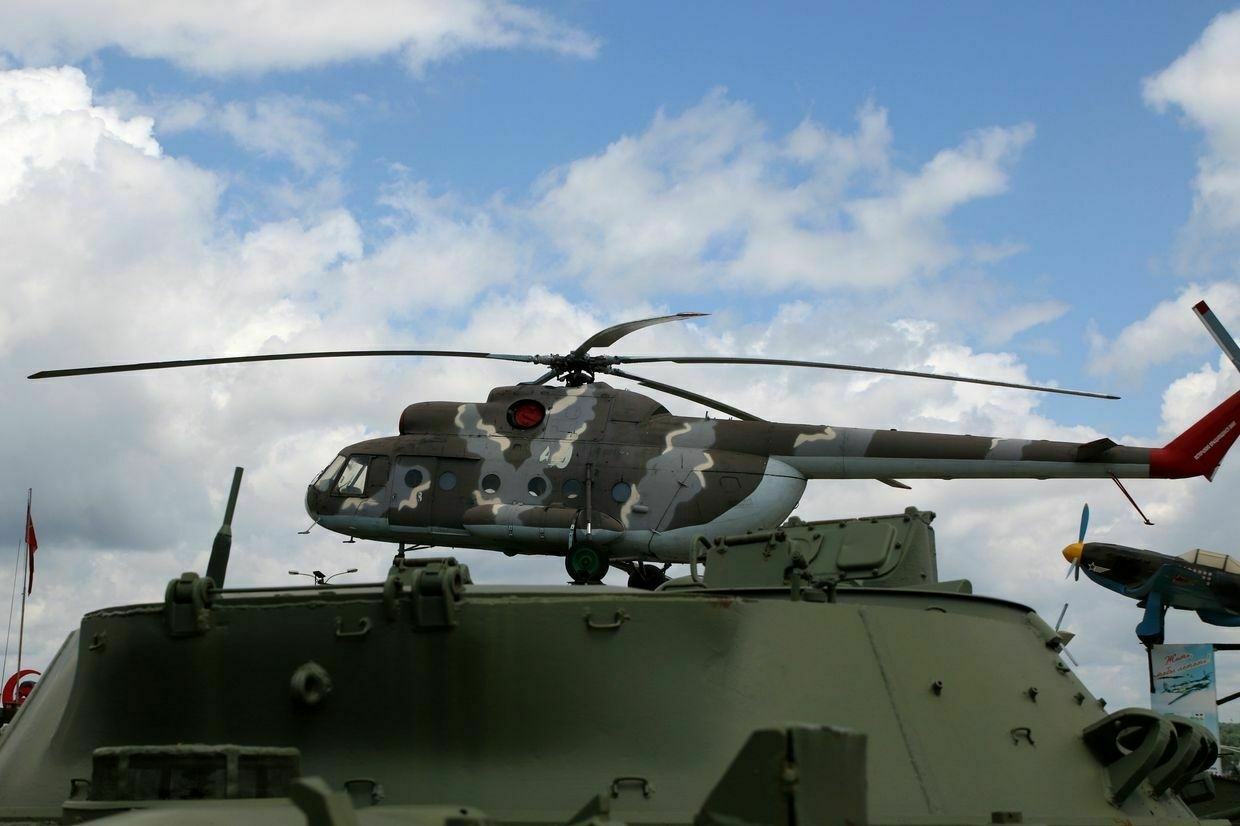
-
MASSIVE shelling of Ukraine: CONSEQUENCES in Cherkasy and Poltava regions #shorts
-
Ukraine approves new 'Murakha' ground robot for combat use

The Defense Ministry has approved the Ukrainian-made ground-based robotics complex “Murakha” (“Ant”) for combat operations, the ministry announced on June 28.
Since 2024, Ukraine has been scaling up robotics development in hopes that mass production of unmanned ground vehicles (UGVs) will “minimize human involvement on the battlefield.”
The Murakha is a tracked robotic platform designed to support front-line units working under challenging conditions, such as under enemy artillery and in heavily mined terrain, the Defense Ministry said.
Its larger size makes it one of Ukraine’s leading UGVs in terms of load capacity. The Murakha can reportedly carry over half a ton of weight across dozens of kilometers. It can also cross difficult terrain and shallow water.
According to the Defense Ministry, the Murakha’s multiple control channels allow it to function successfully even in areas of the battlefield where Russian electronic warfare (EW) systems are operating.
Mobile robots are capable of performing several tasks on the battlefield, including offensive and defensive activities, evacuation of the wounded, logistical support for units, and mining and demining.
In April, the Defense Ministry unveiled the D-21-12R UGV, a ground-based robot equipped with a machine gun.
Ukrainian drones strike missile, drone arsenal in Russia’s Bryansk OblastUkraine’s military intelligence (HUR) struck on June 28 the 1060th Material-Technical Support Center in the city of Bryansk, Ukraine’s General Staff said. The facilities store a Russian missile and drone arsenal, Ukrainska Pravda reported, citing a source in HUR.The Kyiv IndependentDmytro Basmat
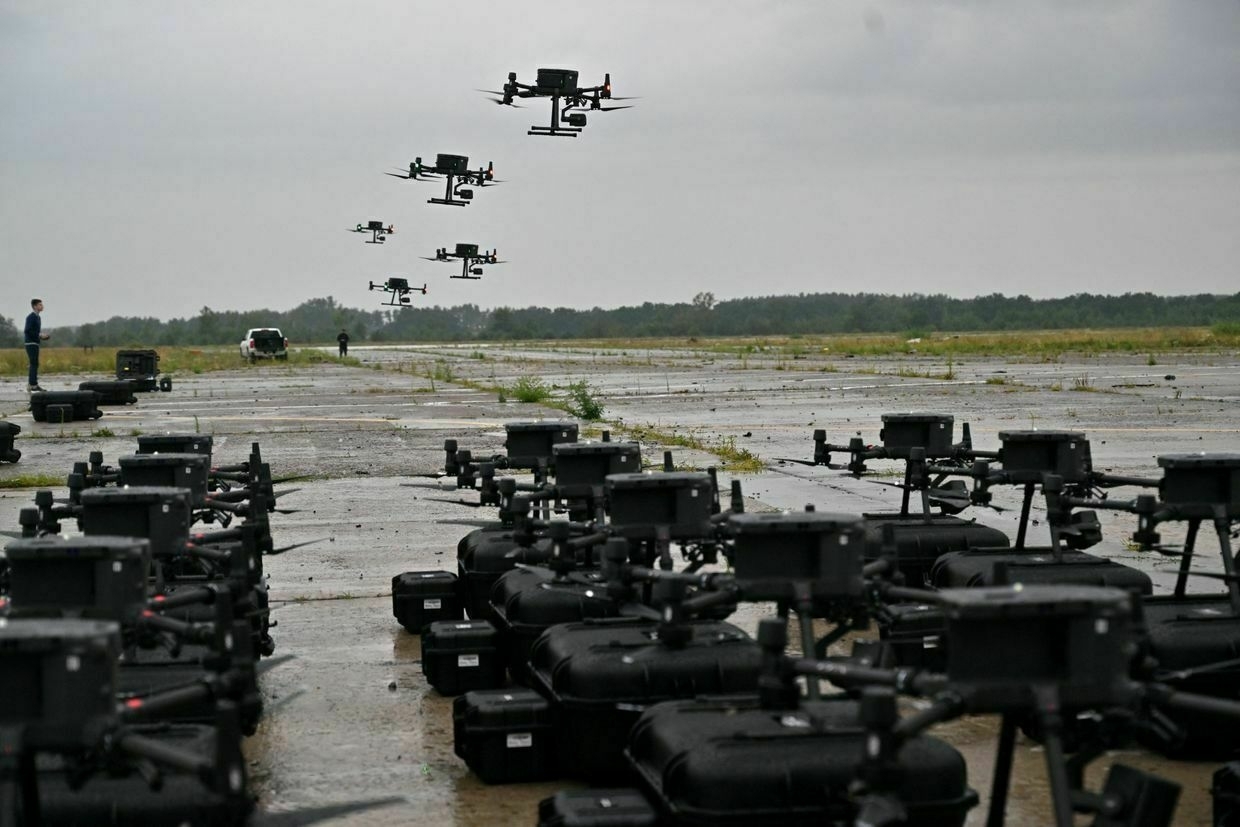
-
Russia reviving efforts to expand LNG exports after US sanctions, Bloomberg reports
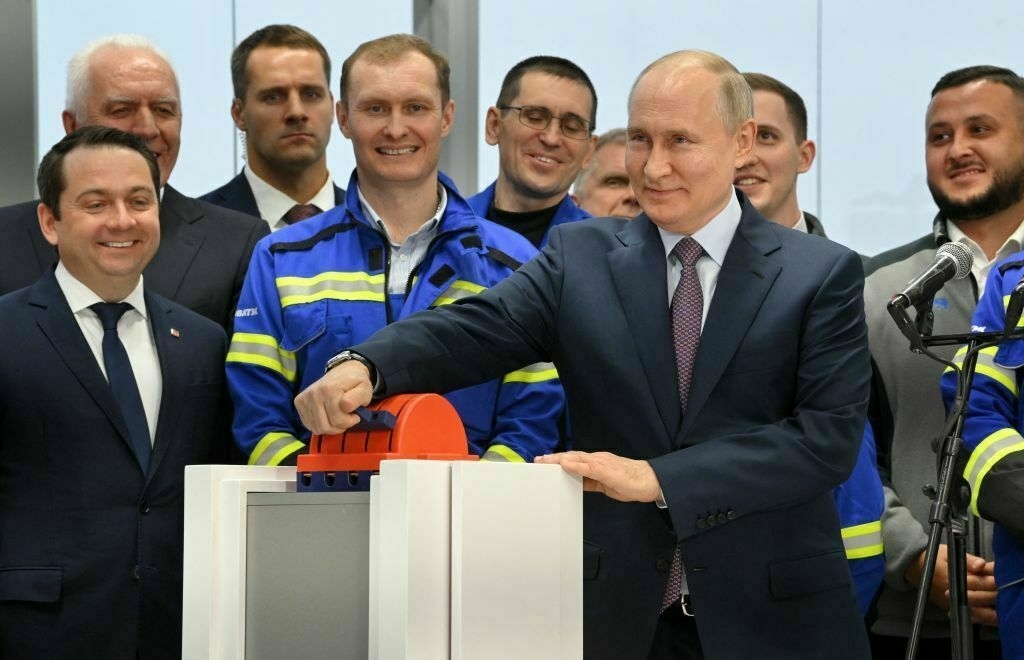
Russia is making another attempt to expand its exports of liquefied natural gas (LNG) after U.S. sanctions disrupted production at its flagship Arctic LNG 2 plant, Bloomberg reported on June 28.
Arctic LNG 2, owned by the Russian company Novatek, was envisaged as Russia’s largest LNG plant and aimed to produce almost 20 million metric tons of LNG per year. The U.S. State Department targeted the Arctic LNG 2 project with sanctions in 2024.
An LNG vessel has reportedly docked at the Arctic LNG 2 facility for the first time since October, according to ship-tracking data and satellite images analyzed by Bloomberg. Data suggests that at least 13 vessels of Russia’s “shadow fleet” have been assembled to potentially serve Arctic LNG 2.
These include four ice-class vessels, including the one currently docked at Arctic LNG 2. Three others are idling in the Barents Sea, along with three traditional LNG vessels. Two more vessels are being repaired in China and another two are idled in the Gulf of Finland. One ship is located near a floating storage facility in Russia’s Far East.
While pipeline shipments of Russian gas to Europe have declined sharply since the full-scale invasion of Ukraine, Russia’s shadow fleet — a group of aging oil tankers used to circumvent global sanctions — continues to grow.
Moscow now has more vessels at its disposal than it did last year, according to Malte Humpert, founder of the Arctic Institute think tank.
“If (Russia) can find buyers, this small fleet should be sufficient to lift cargoes,” Humpert told Bloomberg.
Finding buyers may present a difficulty, due to wariness about sanctions violations. Former U.S. President Joe Biden sanctioned ships and companies connected with exports from Arctic LNG 2 in 2024, thought it is not yet clear if U.S. President Donald Trump will enforce sanctions as strictly.
Representatives of Arctic LNG 2 have continued to search for buyers in China and India, but have not yet made any sales, traders familiar with the matter told Bloomberg.
Arctic LNG 2 cut production from its gas fields to almost zero in November 2024, after halting liquefaction the previous month due to Western sanctions. The U.S. sanctioned two vessels and two entities connected to Arctic LNG 2 in September 2024, after previously targeting the project in a sweeping round of sanctions late August.
The August sanctions likely forced Novatek to scale back its operations at the facility. Novatek itself was sanctioned after the outbreak of the full-scale war in 2022.
Despite escalating war plans, Putin claims Russia will cut military spending starting in 2026Russian President Vladimir Putin claimed on June 27 that Moscow plans to cut its military expenditure beginning next year, in a rebuke of NATO members’ plans to increase defense spending to 5% of GDP.The Kyiv IndependentDmytro Basmat
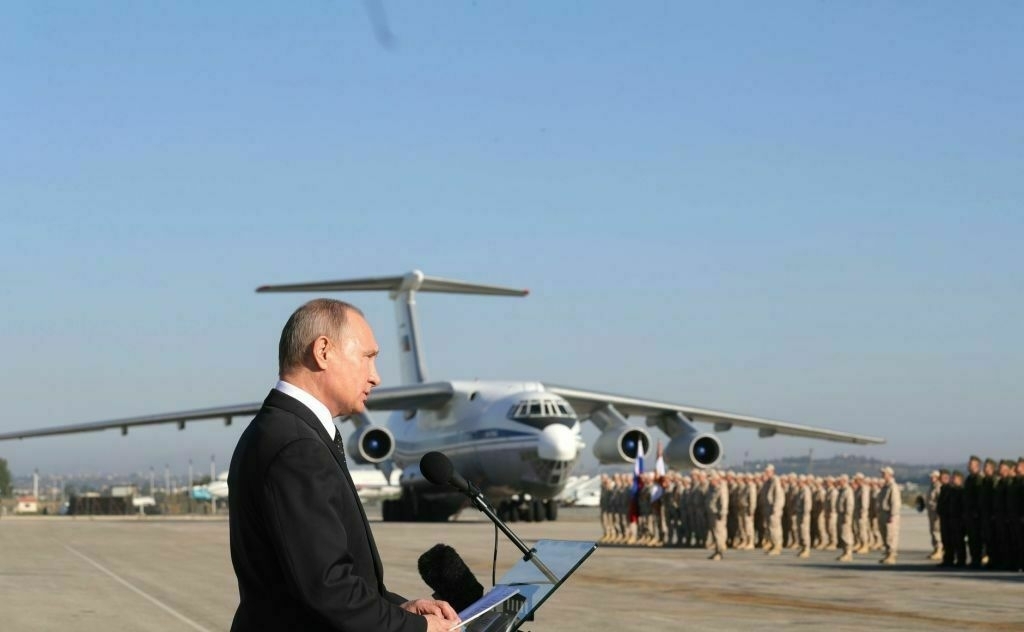
-
Russian mass missile attack targets Ukrainian regions far from front lines
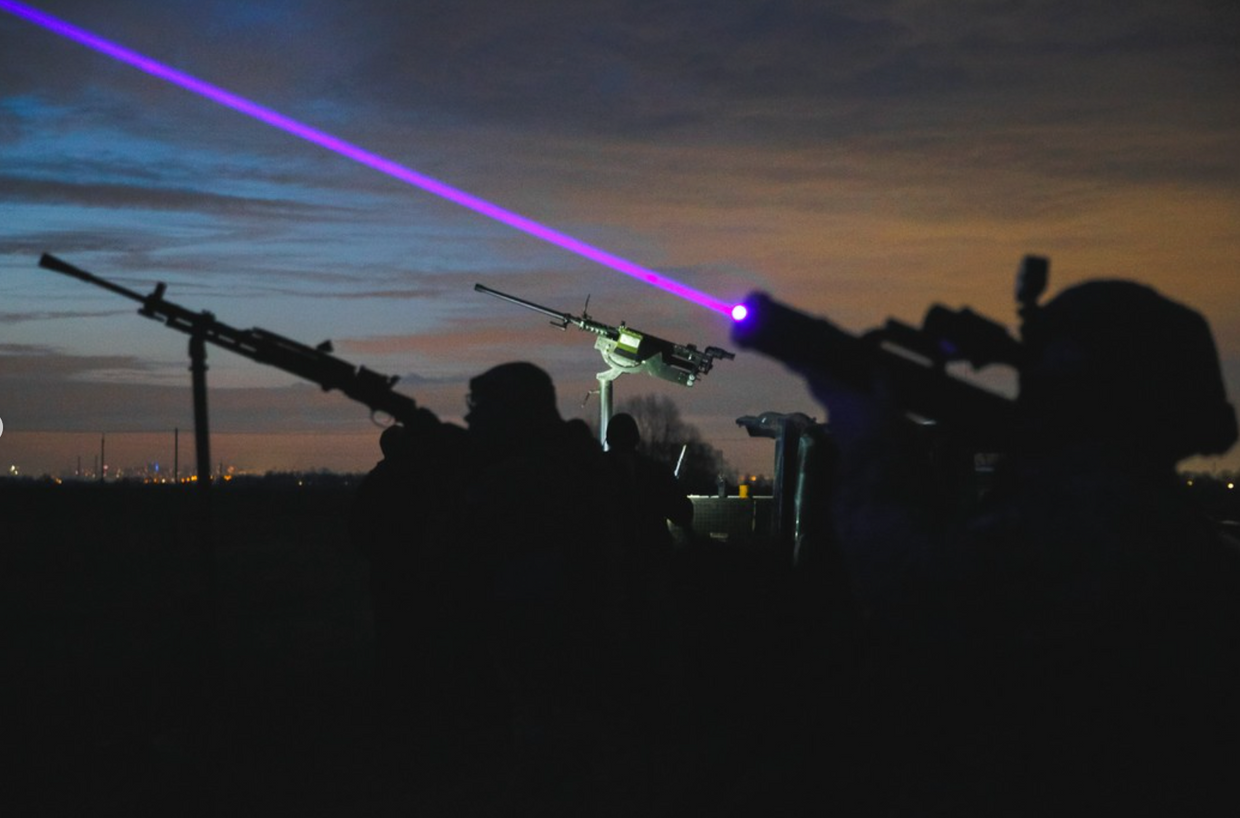
Editor’s Note: This is a developing story and is being updated.
A large-scale Russian missile and drone attack terrorized Ukraine overnight on June 29 as air raid alarms sounded across the country, including western regions far from the front lines.
Russia’s bombardments — a fact of life after three years of full-scale war — have intensified dramatically in May and June, with mass attacks becoming more frequent and more deadly.
Ukraine’s Air Force warned late in the evening on June 28 that Russia had launched three Tu-95 bombers from the Olenya military airfield in Murmansk Oblast. The Air Force also warned that multiple groups of Russian drones were heading towards various regions.
Several hours later, the Air Force reported that a Russian MiG-31K — a jet capable of carrying Kinzhal ballistic missiles — took off from Savasleyka airfield in Russia’s Nizhny Novgorod Oblast. The Air Force followed this up with warnings that cruise missiles were bound for several regions, including Ternopil, Lviv, and Ivano-Frankivsk oblasts in western Ukraine.
The Operational Command of the Polish Armed Forces said it scrambled fighter jets and activated ground-based air defense units in response to the Russian aerial attacks in western Ukraine.
Ukrainian drones strike missile, drone arsenal in Russia’s Bryansk OblastUkraine’s military intelligence (HUR) struck on June 28 the 1060th Material-Technical Support Center in the city of Bryansk, Ukraine’s General Staff said. The facilities store a Russian missile and drone arsenal, Ukrainska Pravda reported, citing a source in HUR.The Kyiv IndependentDmytro Basmat
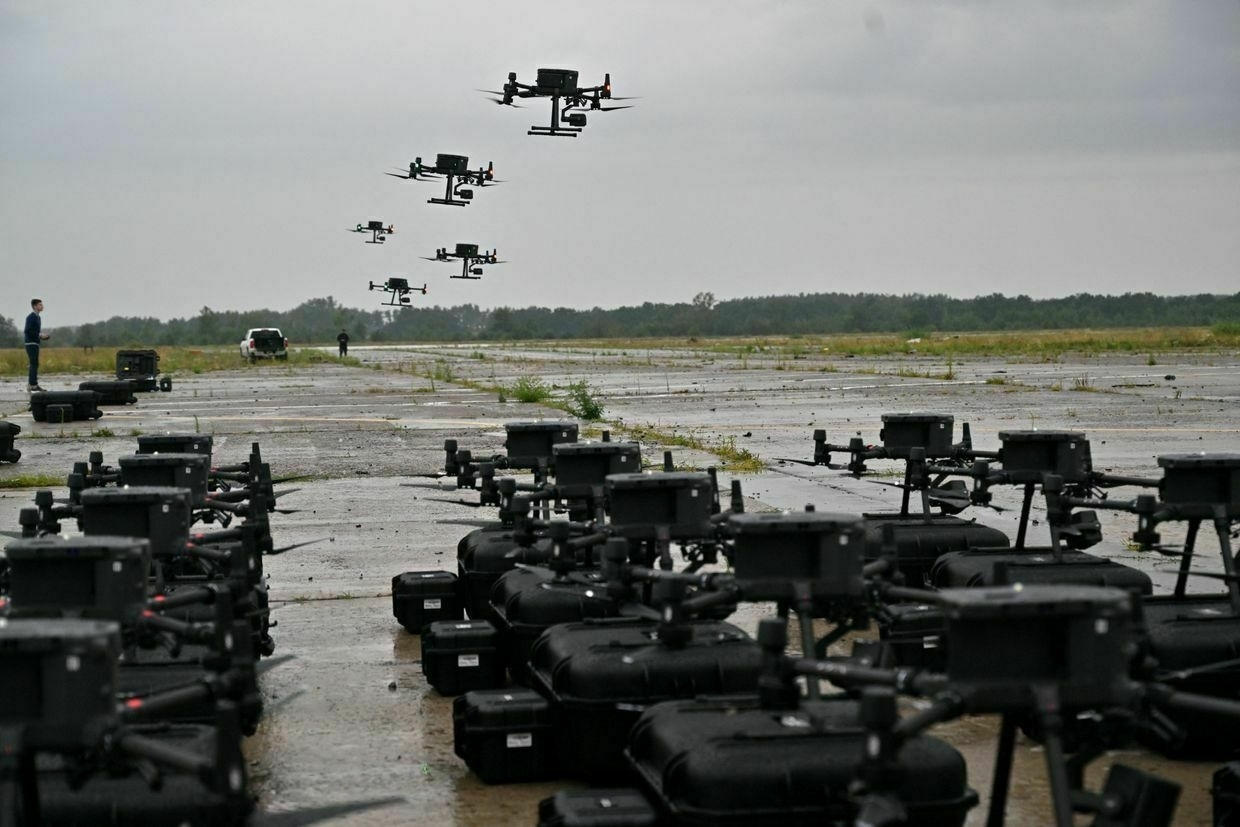
Explosions and strikes were reported in Mykolaiv, Kremenchuk, Zaporizhzhia, Cherkasy Oblast, Ivano-Frankivsk, and Lviv as waves of attacks came throughout the night. Some regional officials shared preliminary reports of damage and casualties even as air defense continued to operate in the area.
Civilian infrastructure was damaged and at least three people were injured in attacks on Cherkasy Oblast, Governor Ihor Taburets reported.
In Kremenchuk, Poltava Oblast, an undisclosed enterprise was hit, causing a fire, according to Governor Volodymyr Kohut.
A production facility at an unnamed enterprise in Zaporizhzhia was hit during an overnight missile attack, Governor Ivan Fedorov said. No casualties were reported.
After the alarms died down, officials in Lviv Oblast said that Russia attempted to strike critical infrastructure in the region. According to Lviv Mayor Andrii Sadovyi, these efforts were largely unsuccessful.
“Despite the complexity of this overnight combined attack, no one was injured and no civilian buildings were damaged in Lviv,” he wrote on Telegram.
Mykolaiv Oblast Governor Vitalii Kim reported that Russia targeted the city overnight with ballistic missiles and Shahed drones, hitting an infrastructure facility. The strike caused a fire but no casualties.
The mass missile and drone attack comes a day after Russian President Vladimir Putin told reporters that Moscow is ready to hold another round of peace talks.
Ukrainian and Russian delegations have now held two direct talks in Istanbul, but the discussions have yielded few results outside of coordinated prisoner swaps.
Moscow refuses to budge on its maximalist ambitions in Ukraine and is unwilling to enter a ceasefire unless Kyiv preemptively agrees to surrender all foreign military aid. Putin on June 20 declared that “all Ukraine is ours” in a bombastic speech at the St. Petersburg Economic Forum.
Russian ballistics and kamikaze drones have targeted Kyiv and other Ukrainian cities with renewed ferocity, killing dozens of civilians and injuring hundreds more. Just this week, a Russian missile struck a passenger train in Dnipro, leaving 21 dead and over 300 wounded.
Ukrainian drone strike on Crimea air base destroys 3 Russian helicopters, SBU claimsThe attack destroyed Mi-8, Mi-26 and Mi-28 attack helicopters, and a Pantsyr-S1 self-propelled anti-aircraft missile and gun system, the Security Service of Ukraine told the Kyiv Independent. The Kyiv IndependentKateryna Denisova
The Kyiv IndependentKateryna Denisova